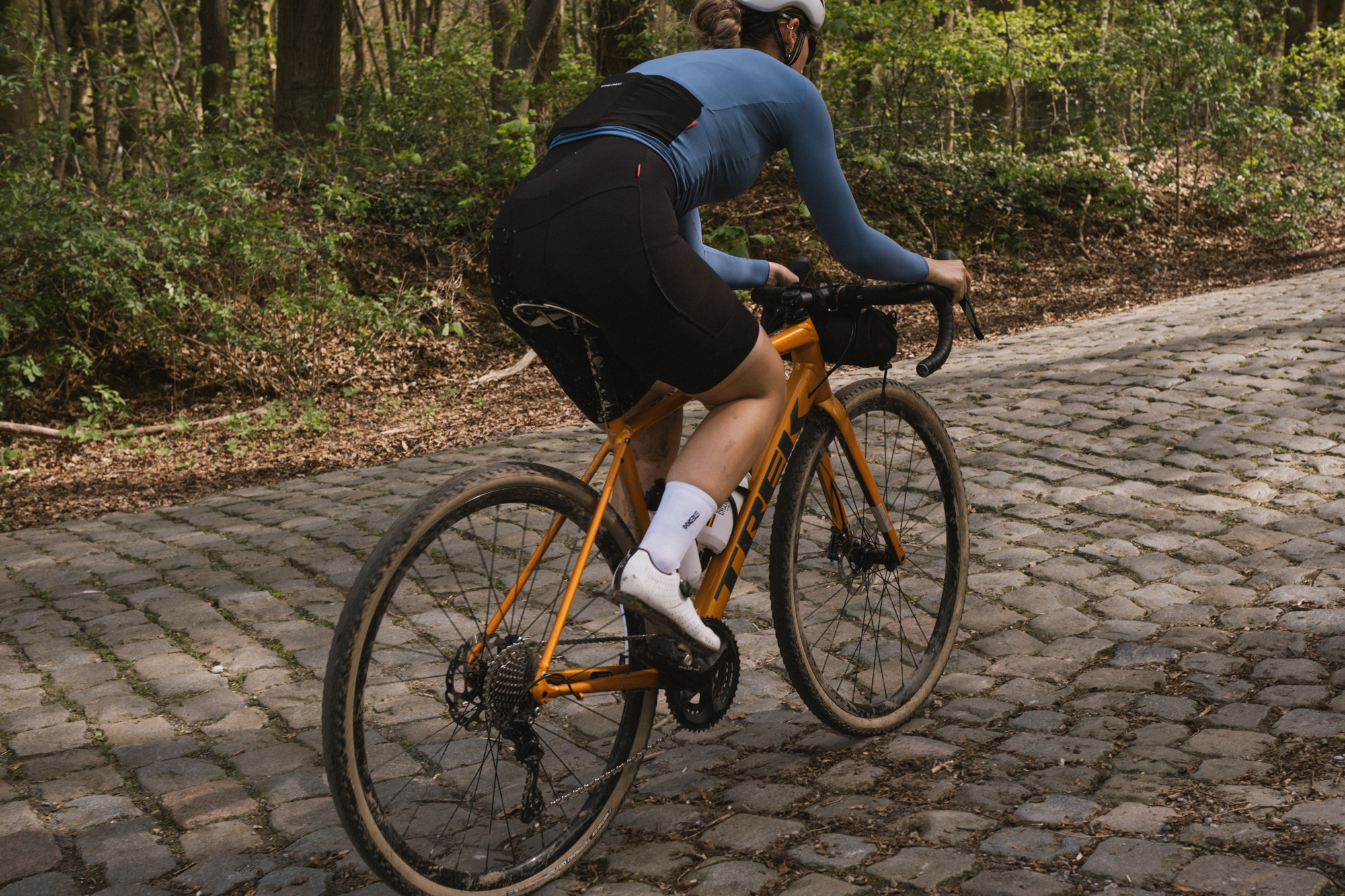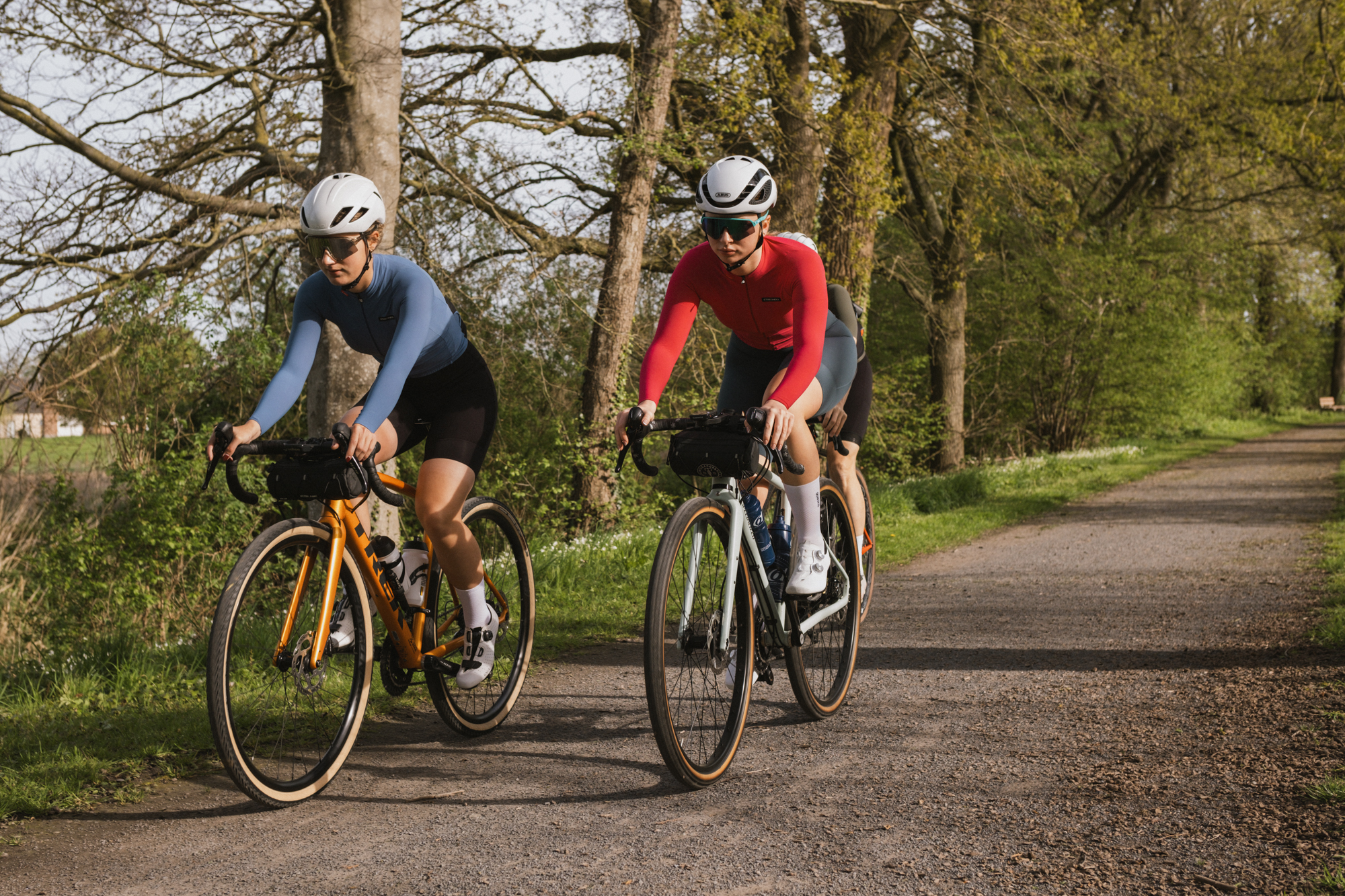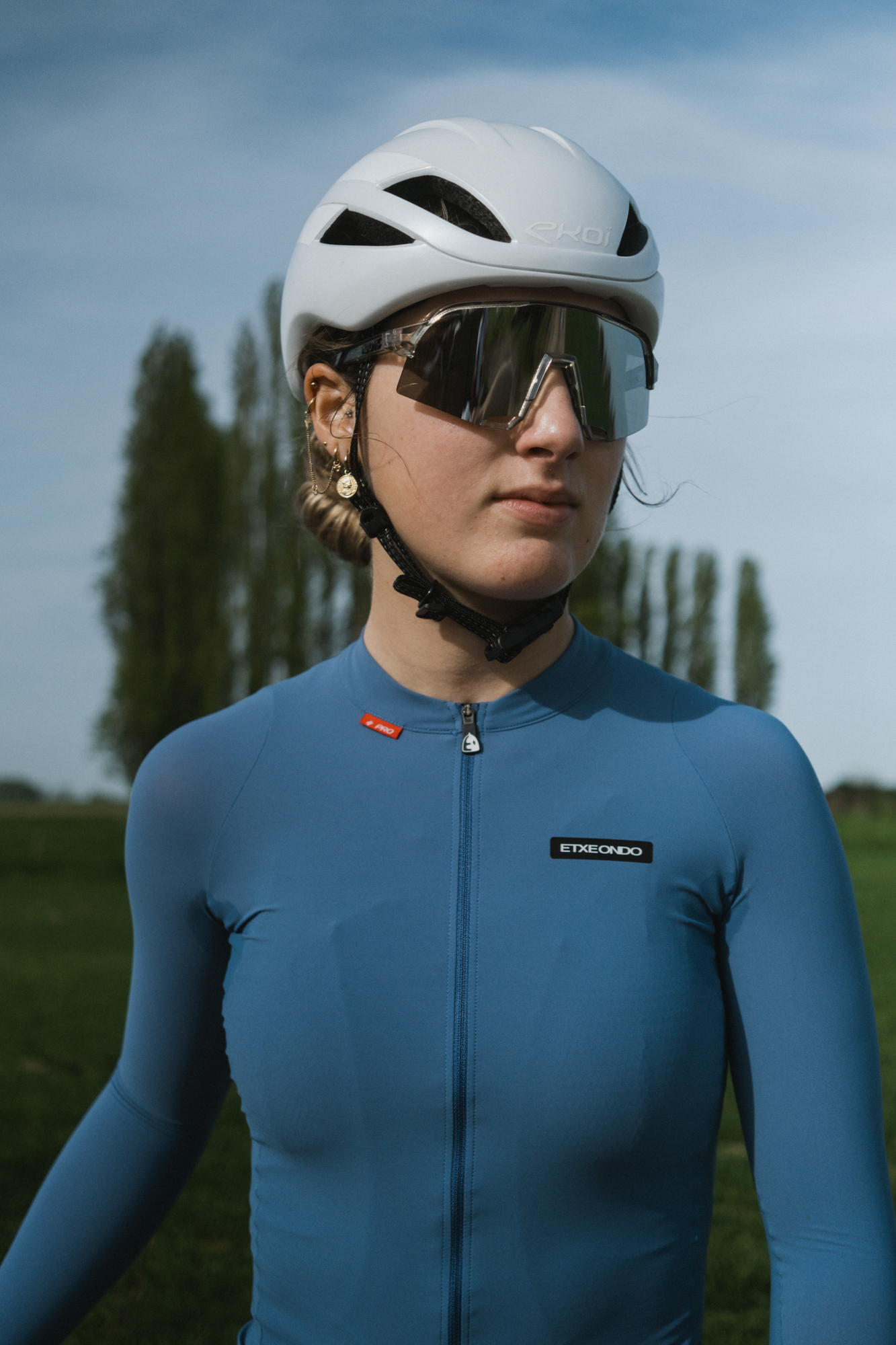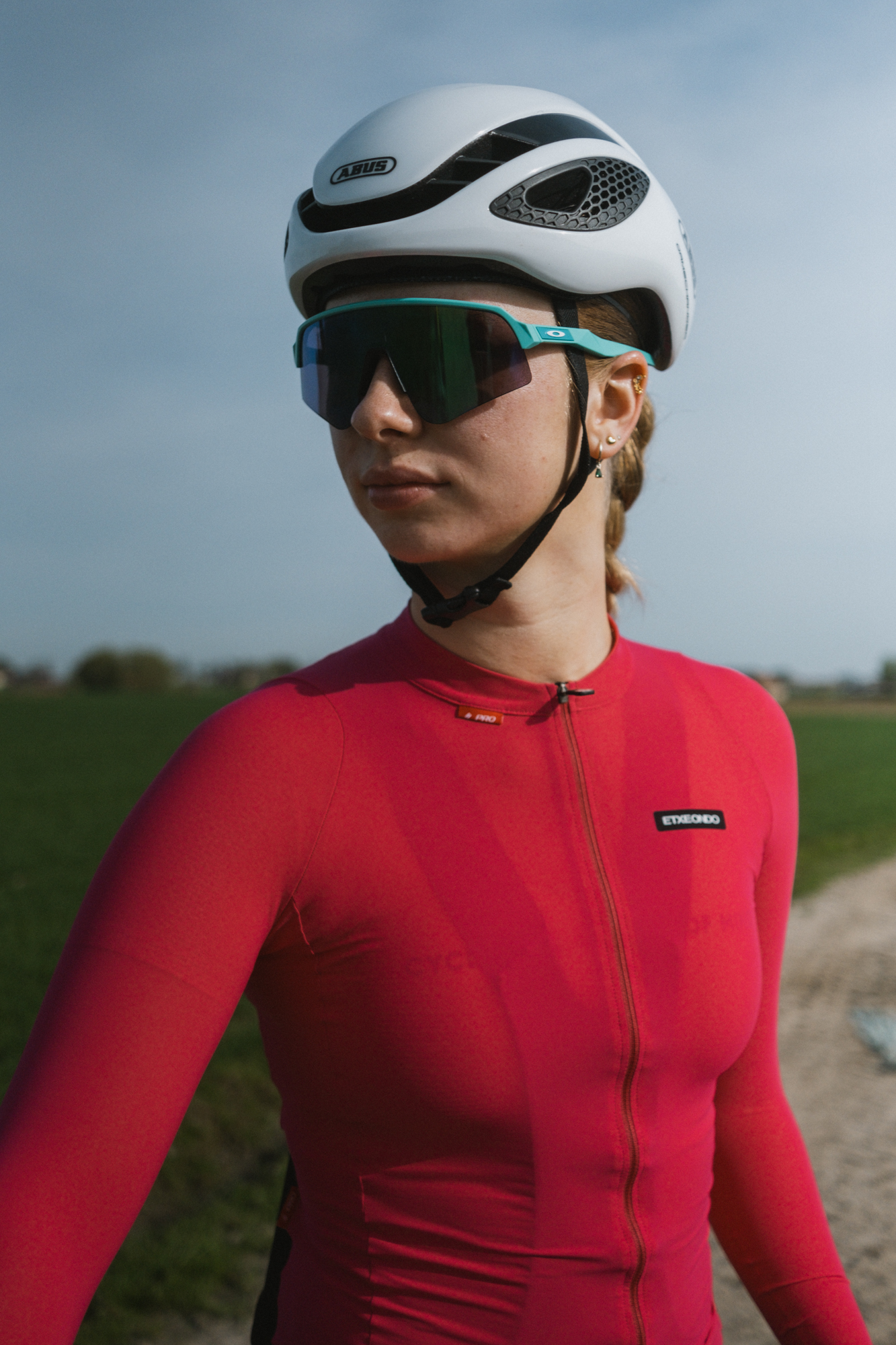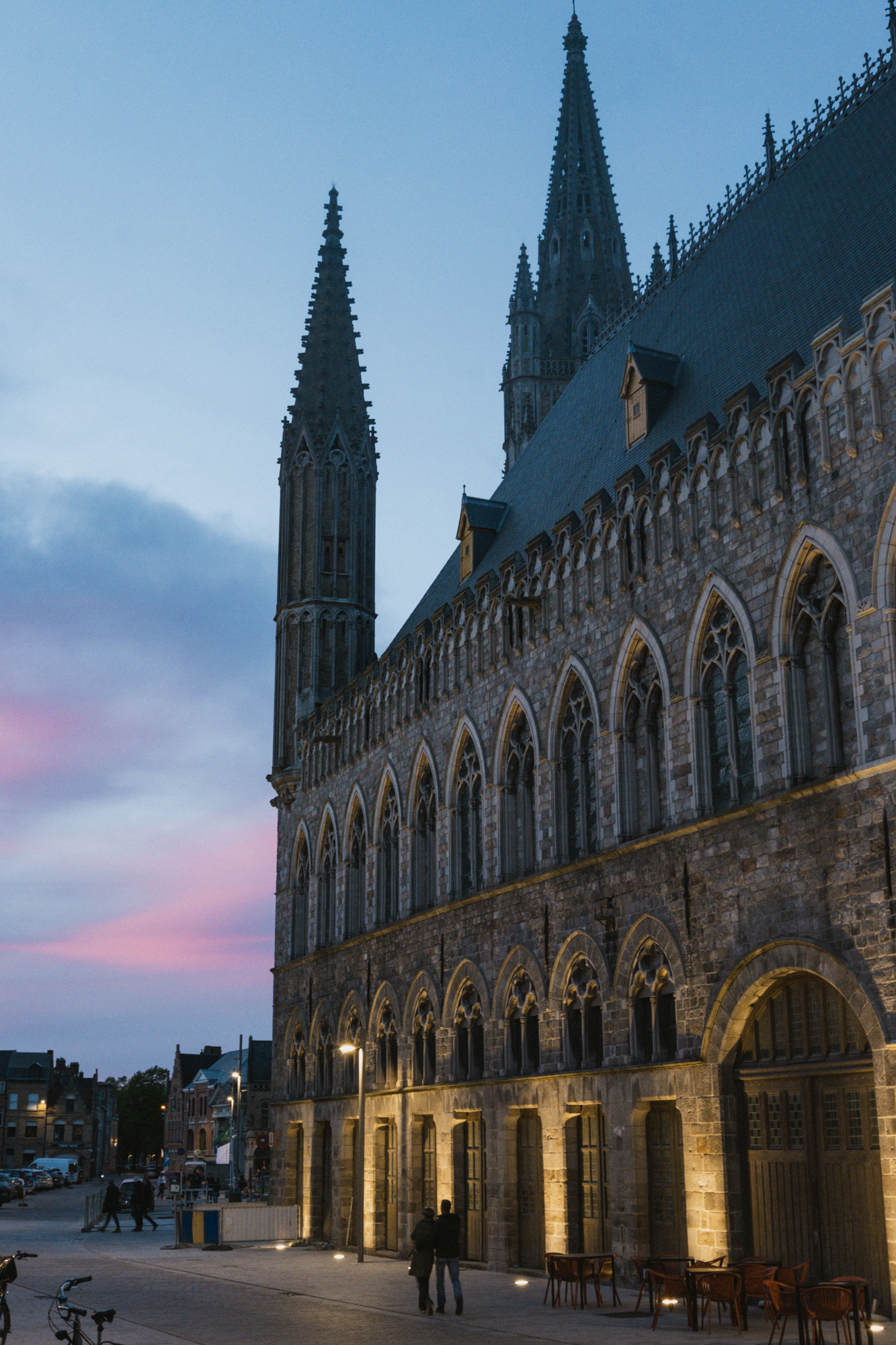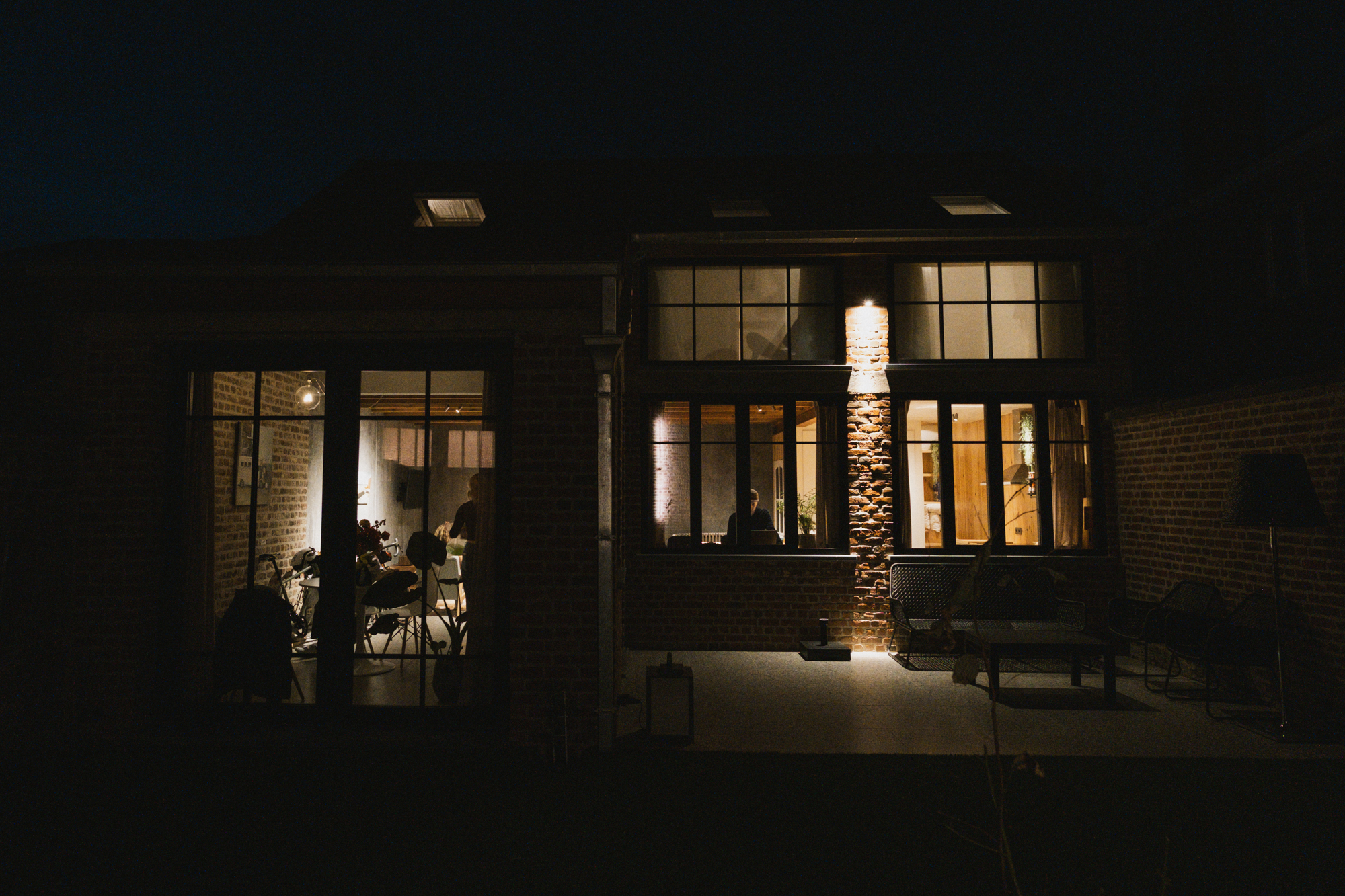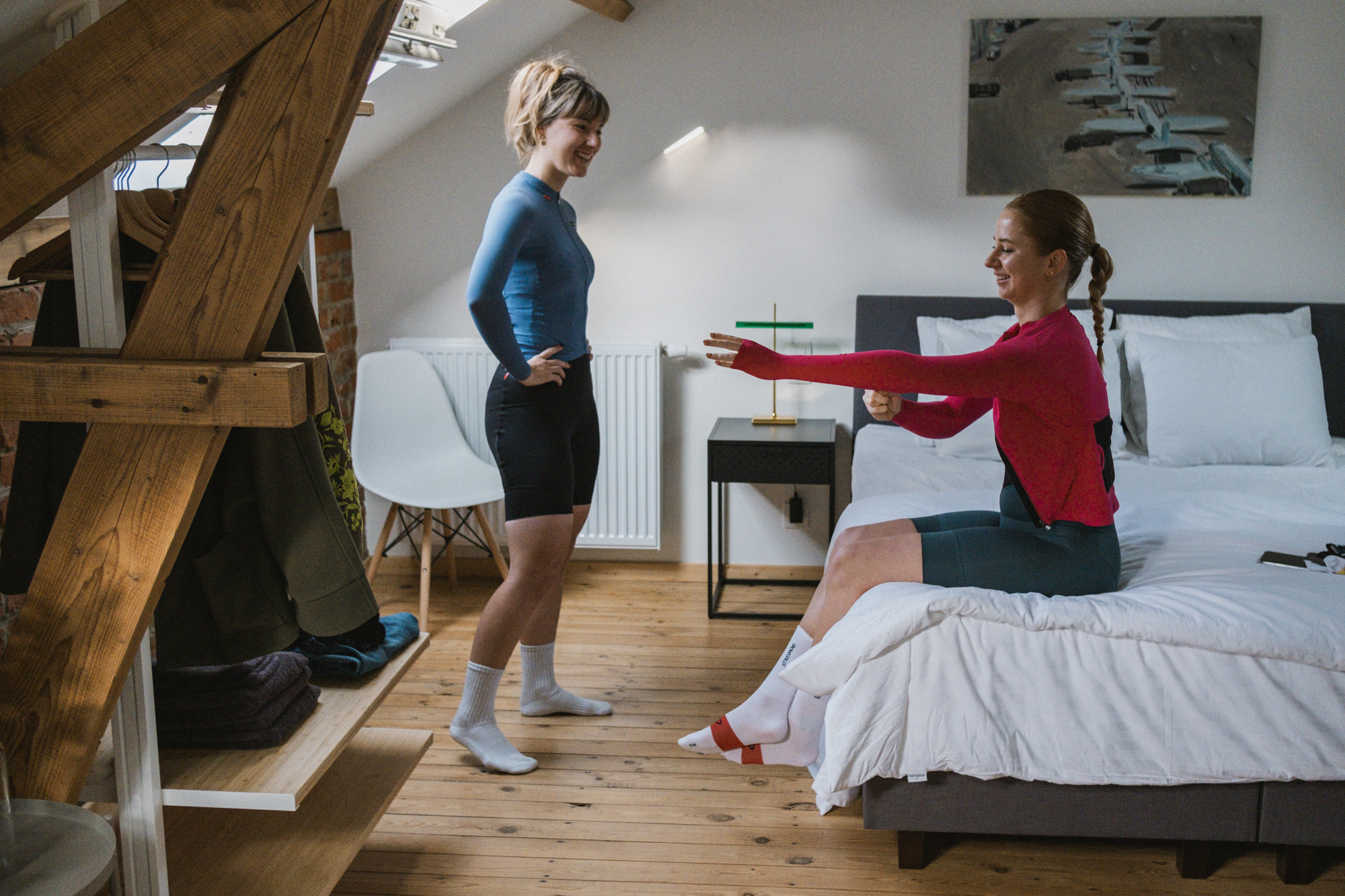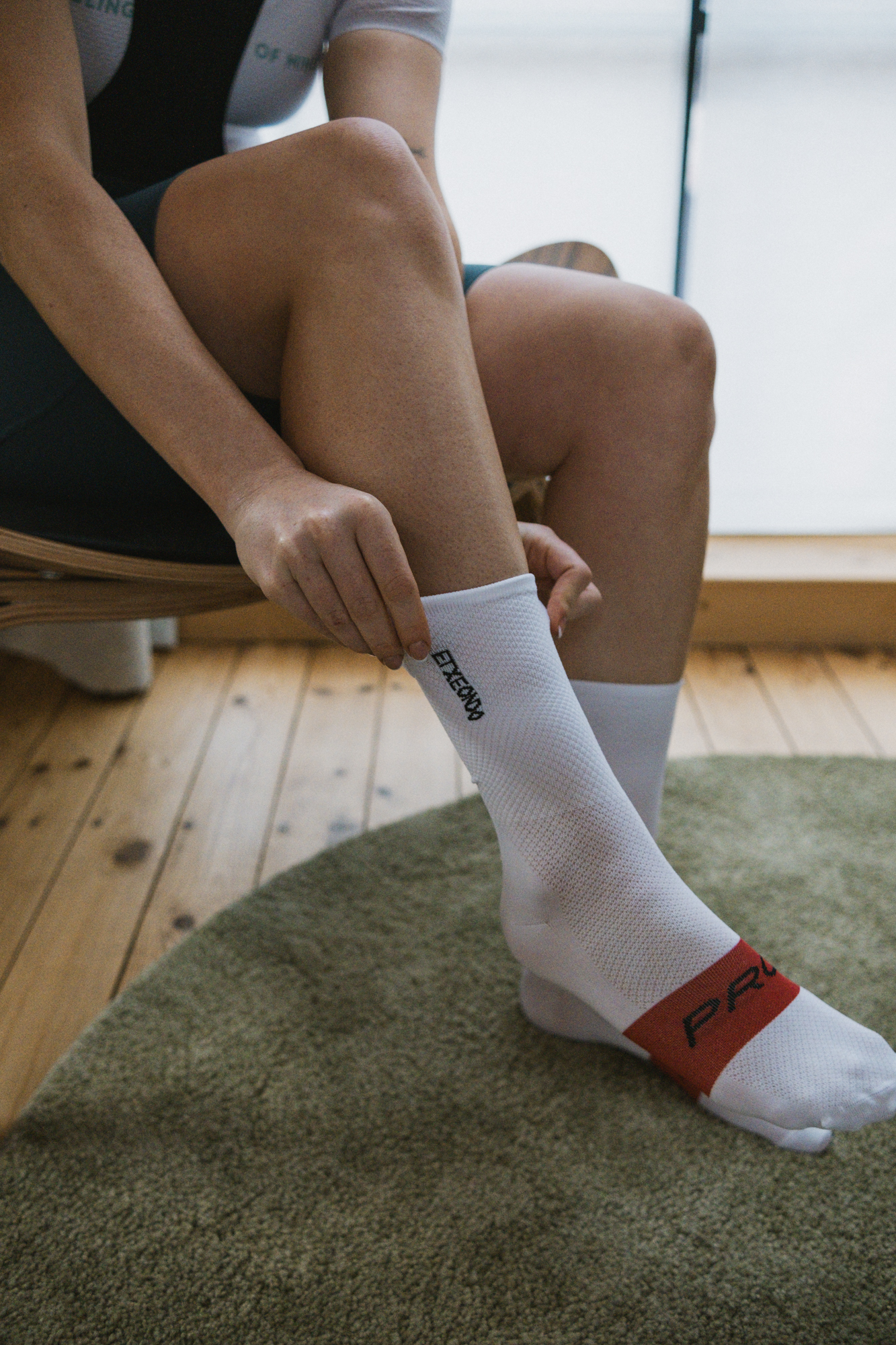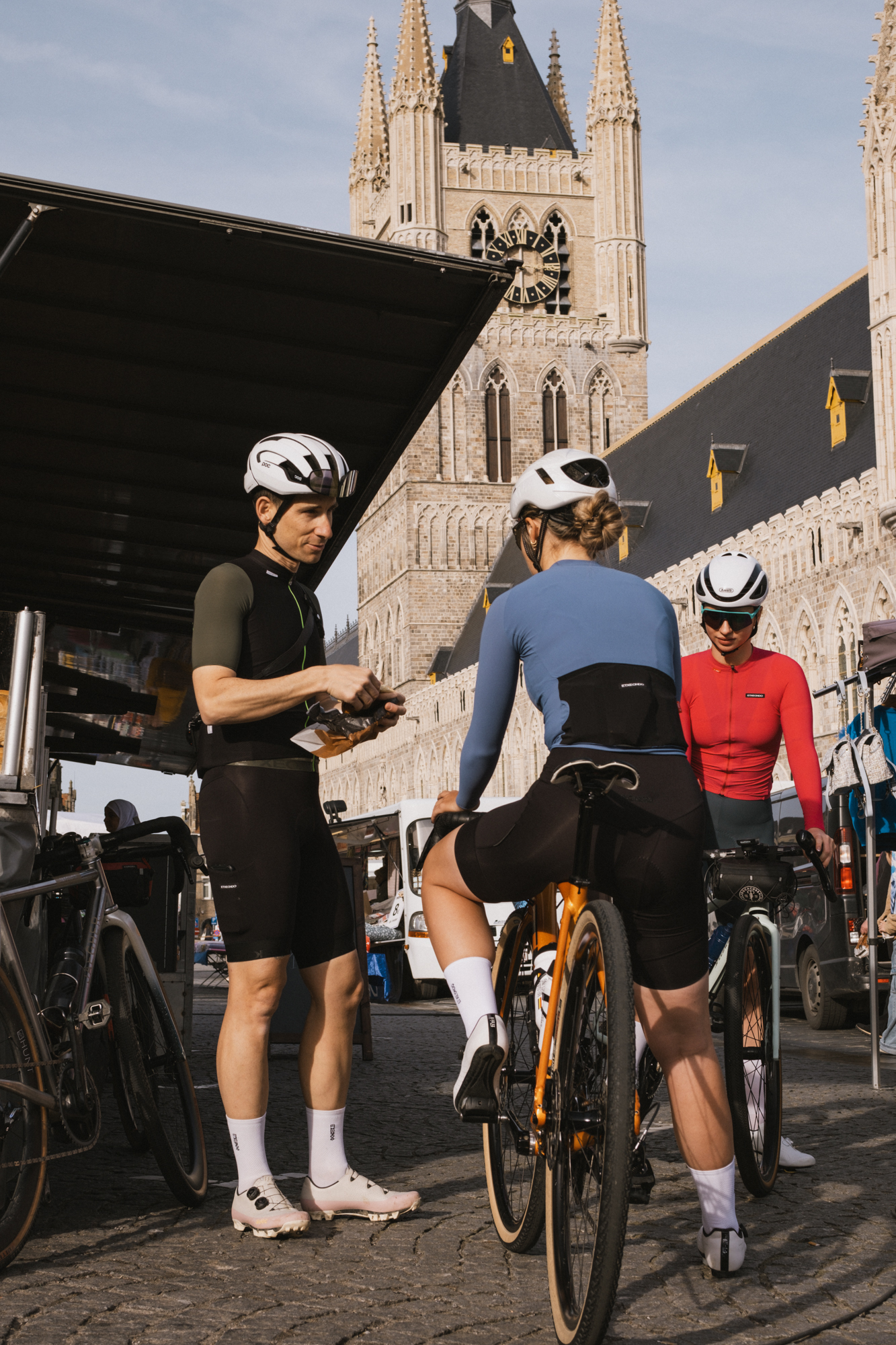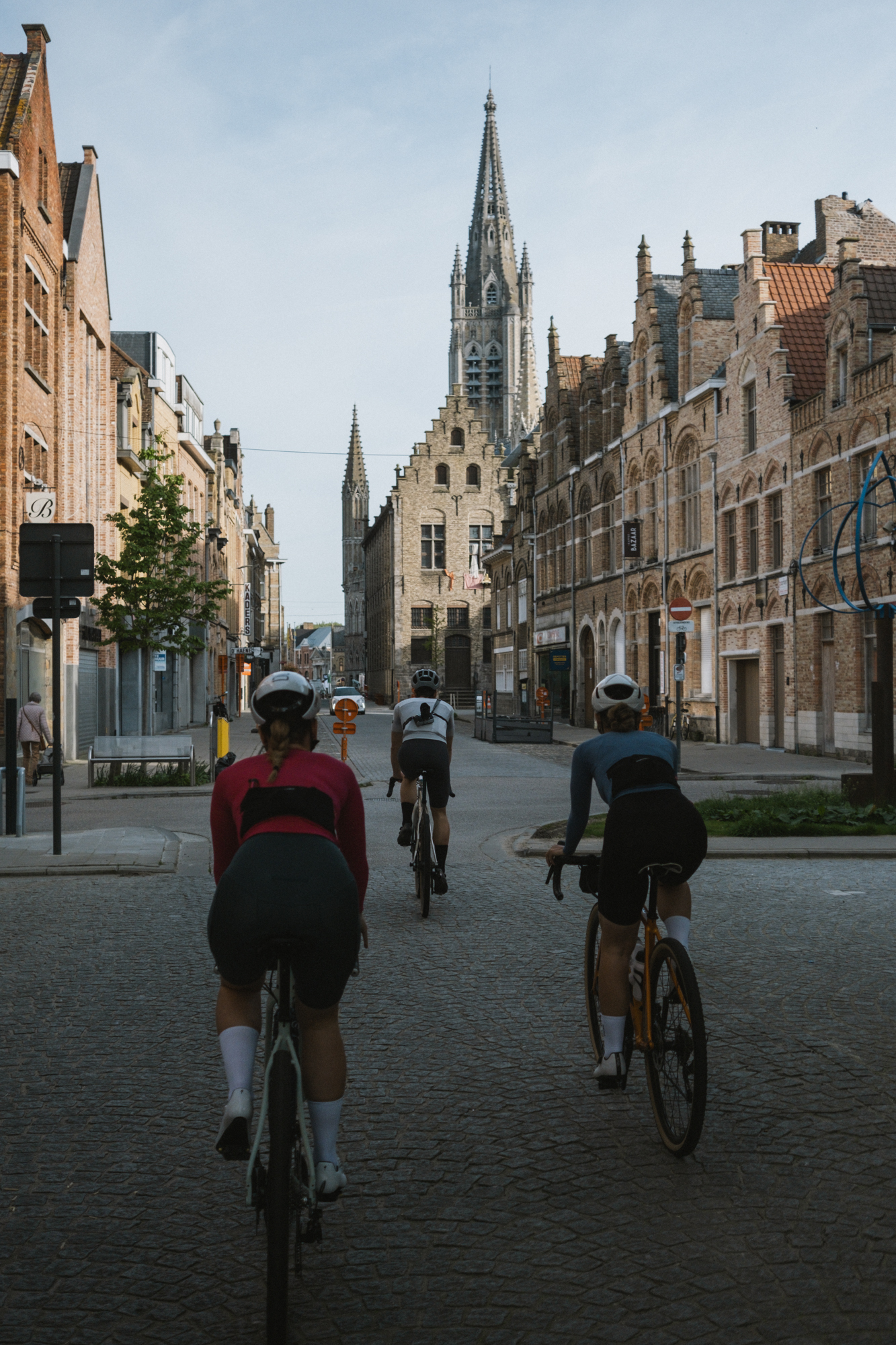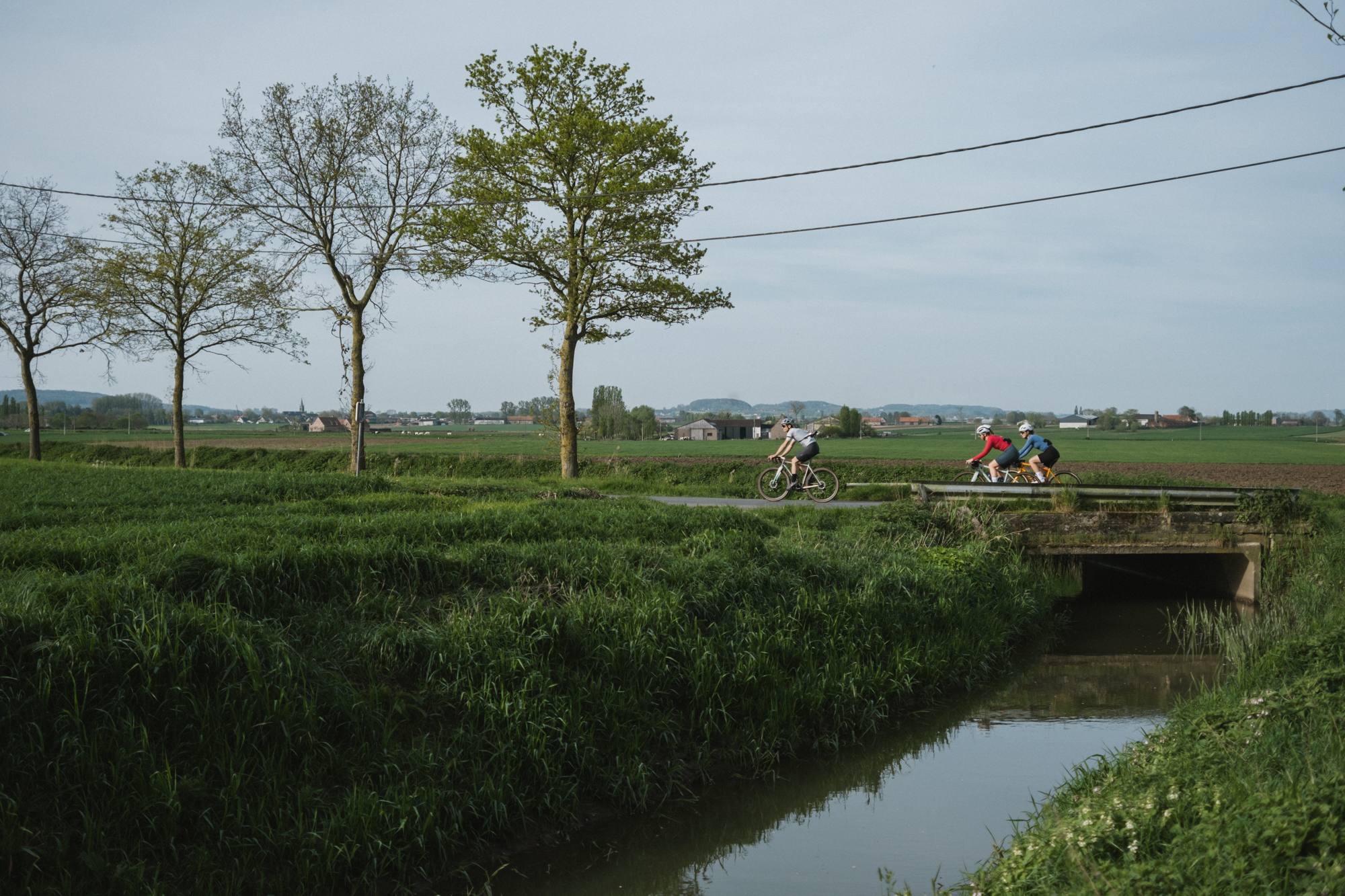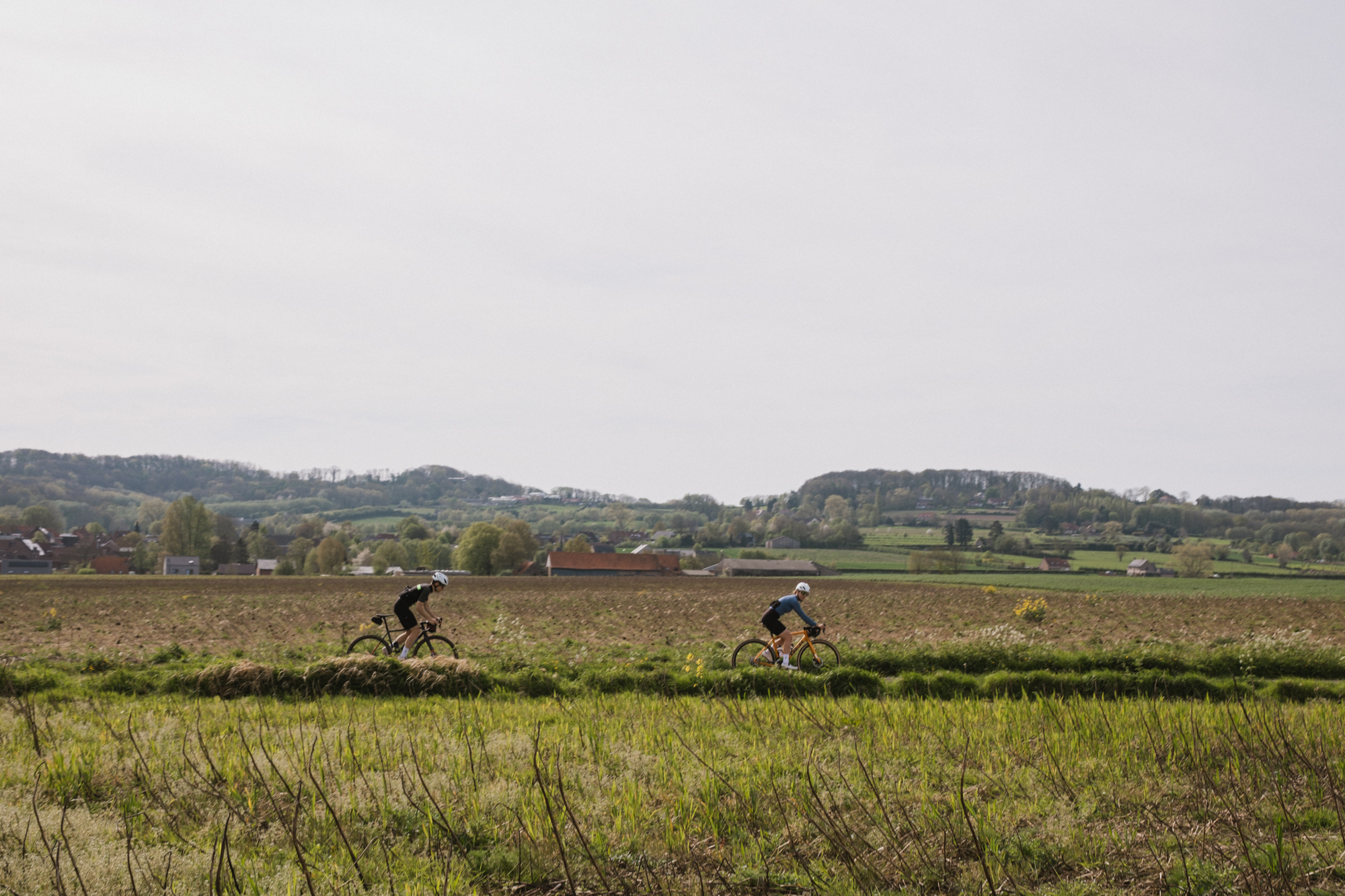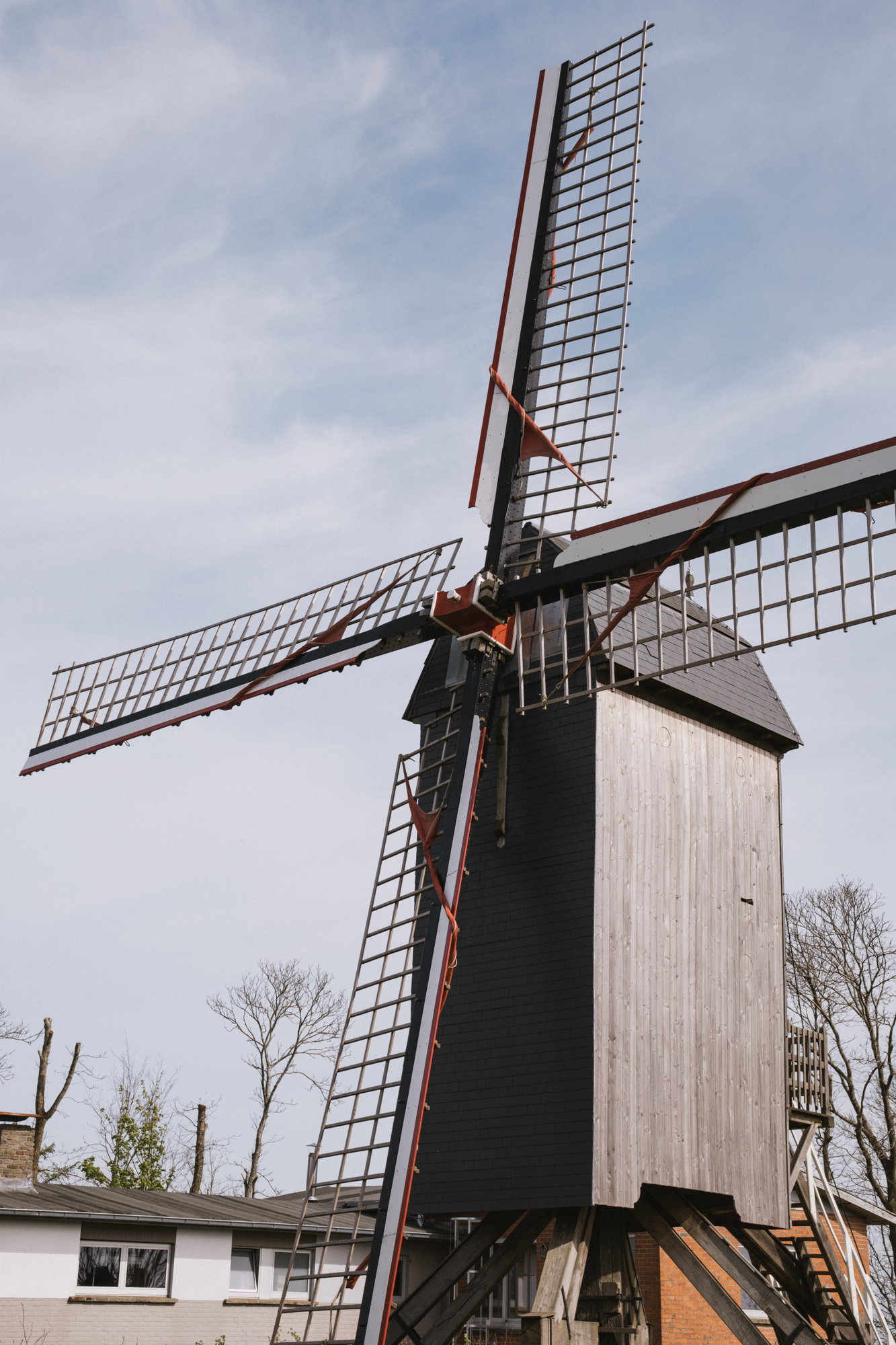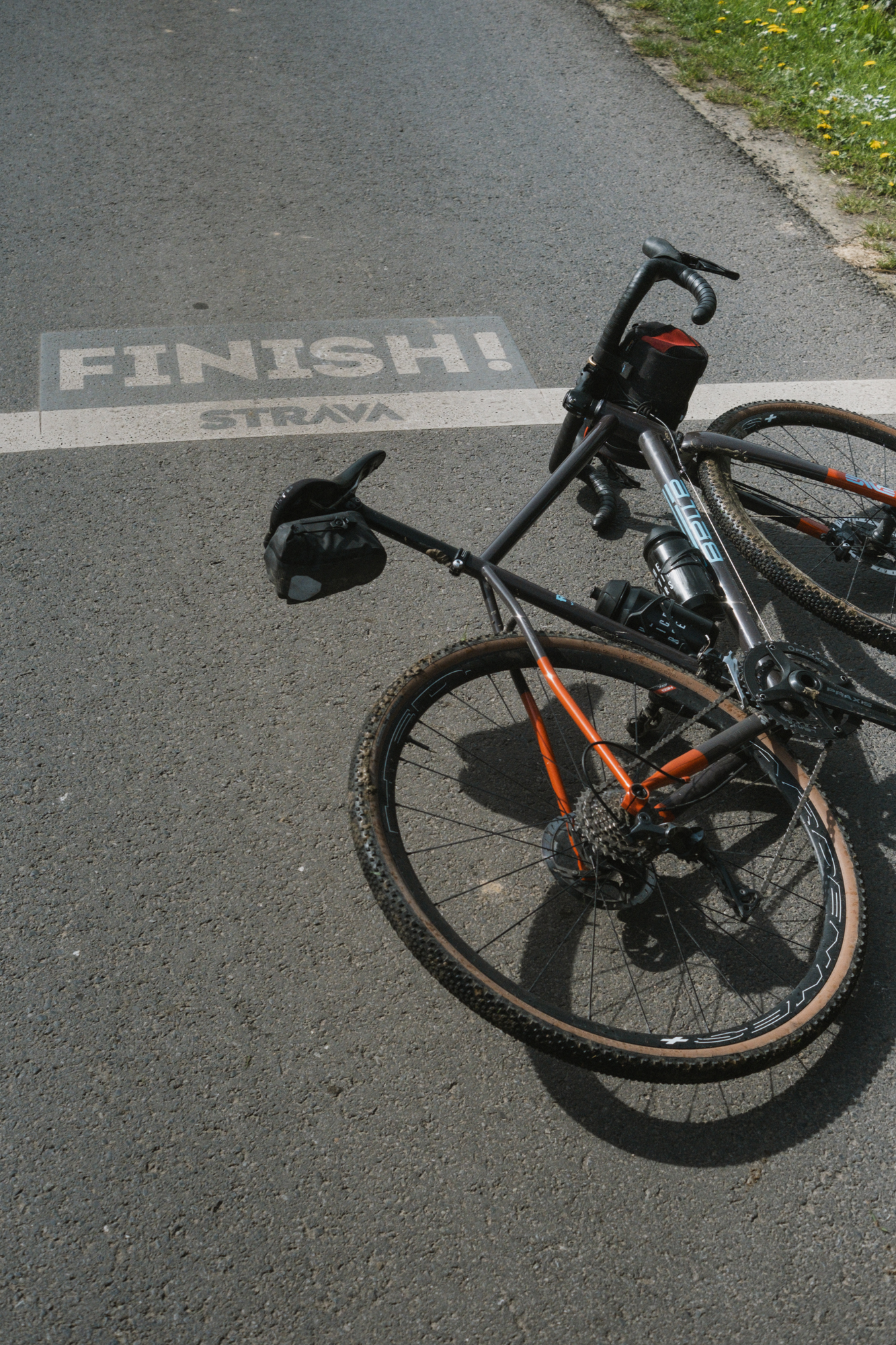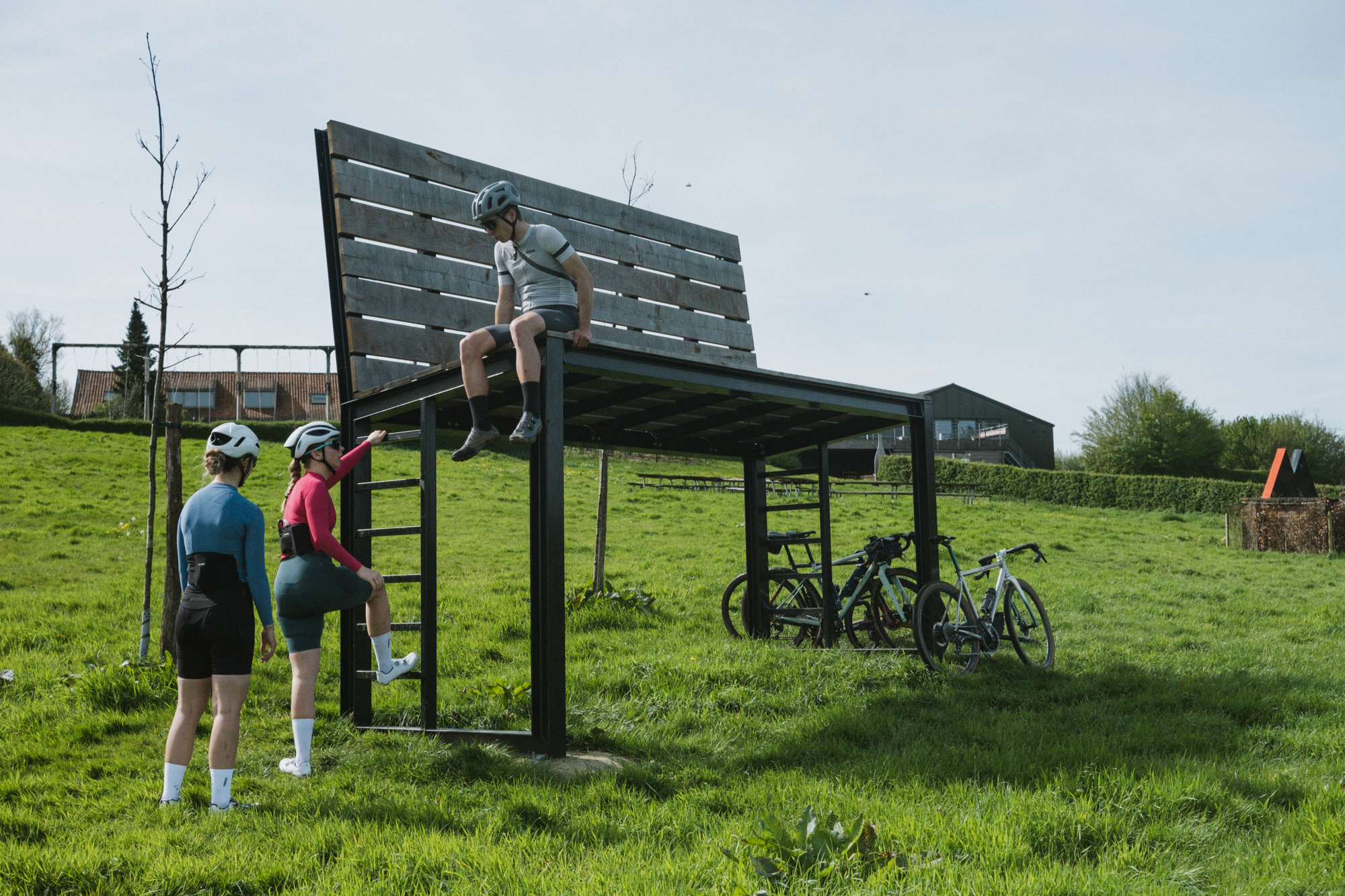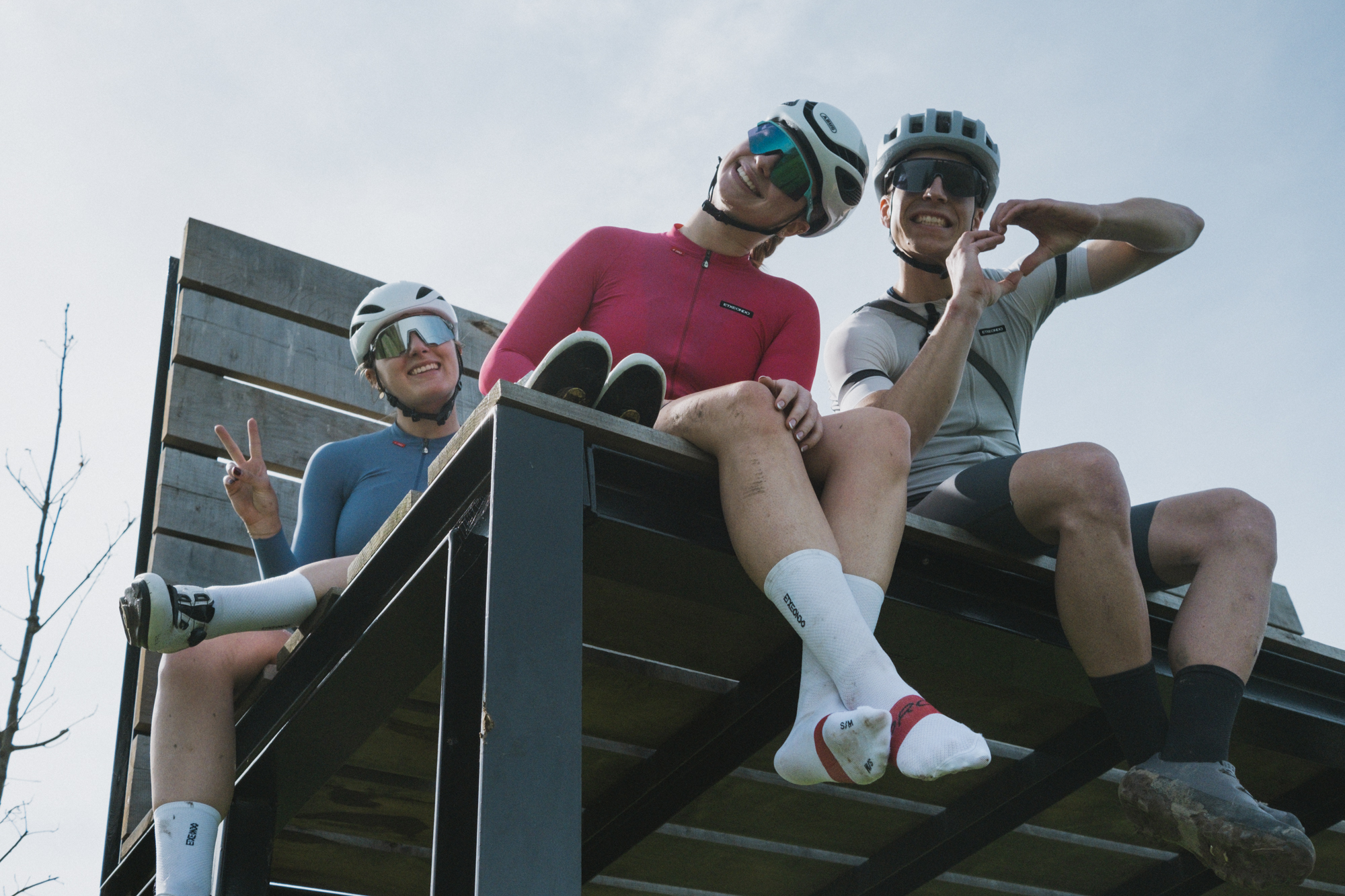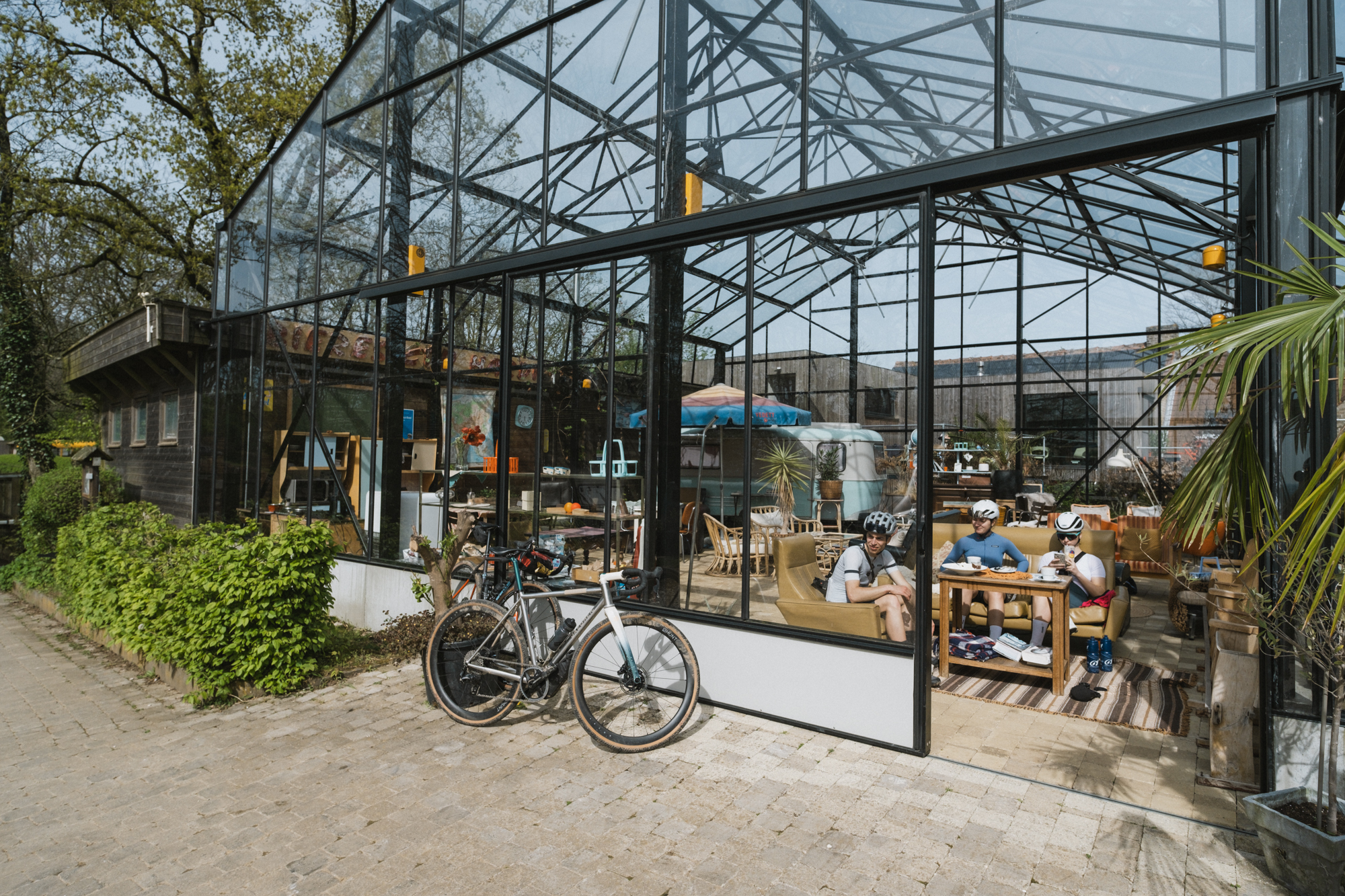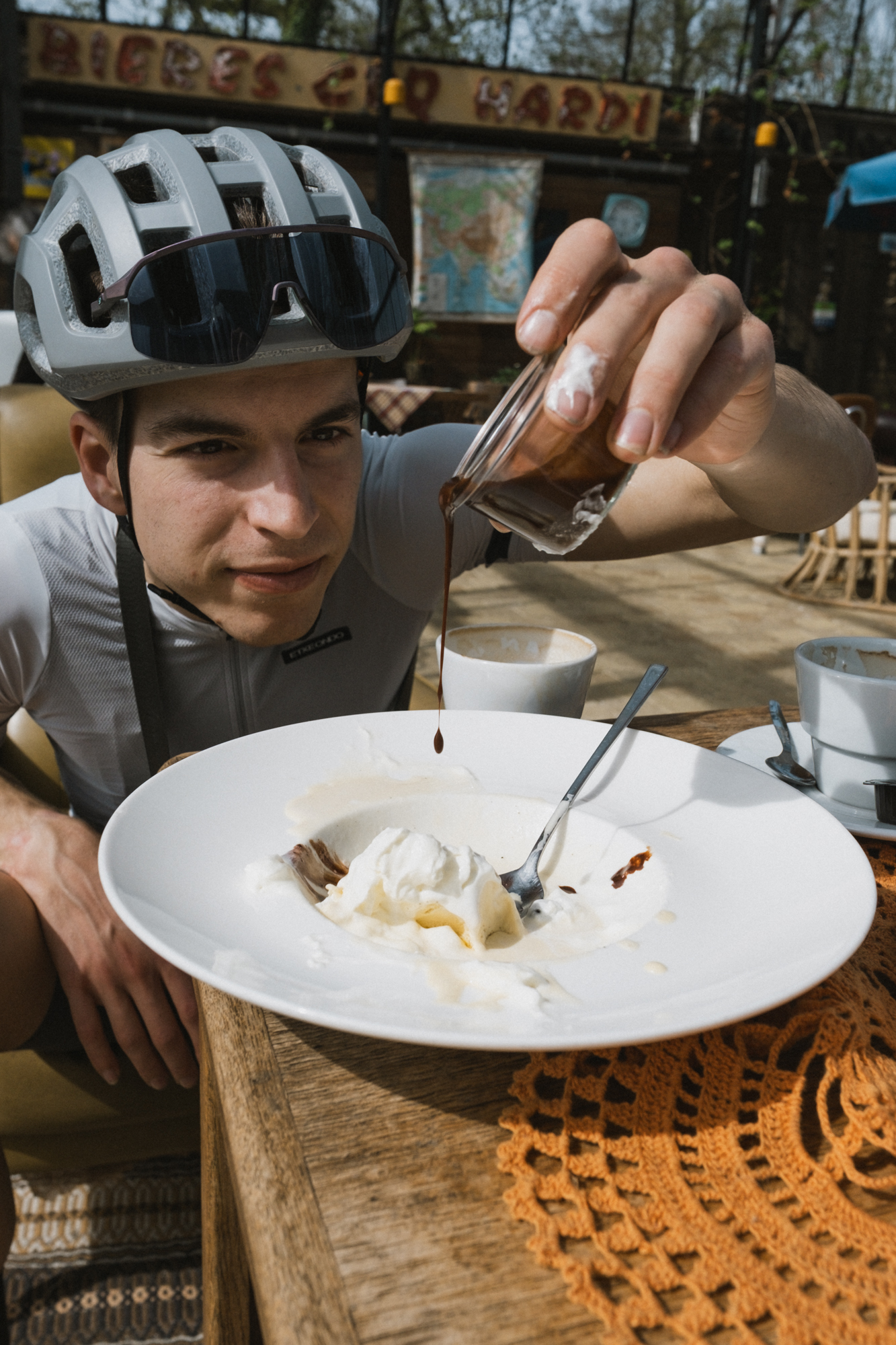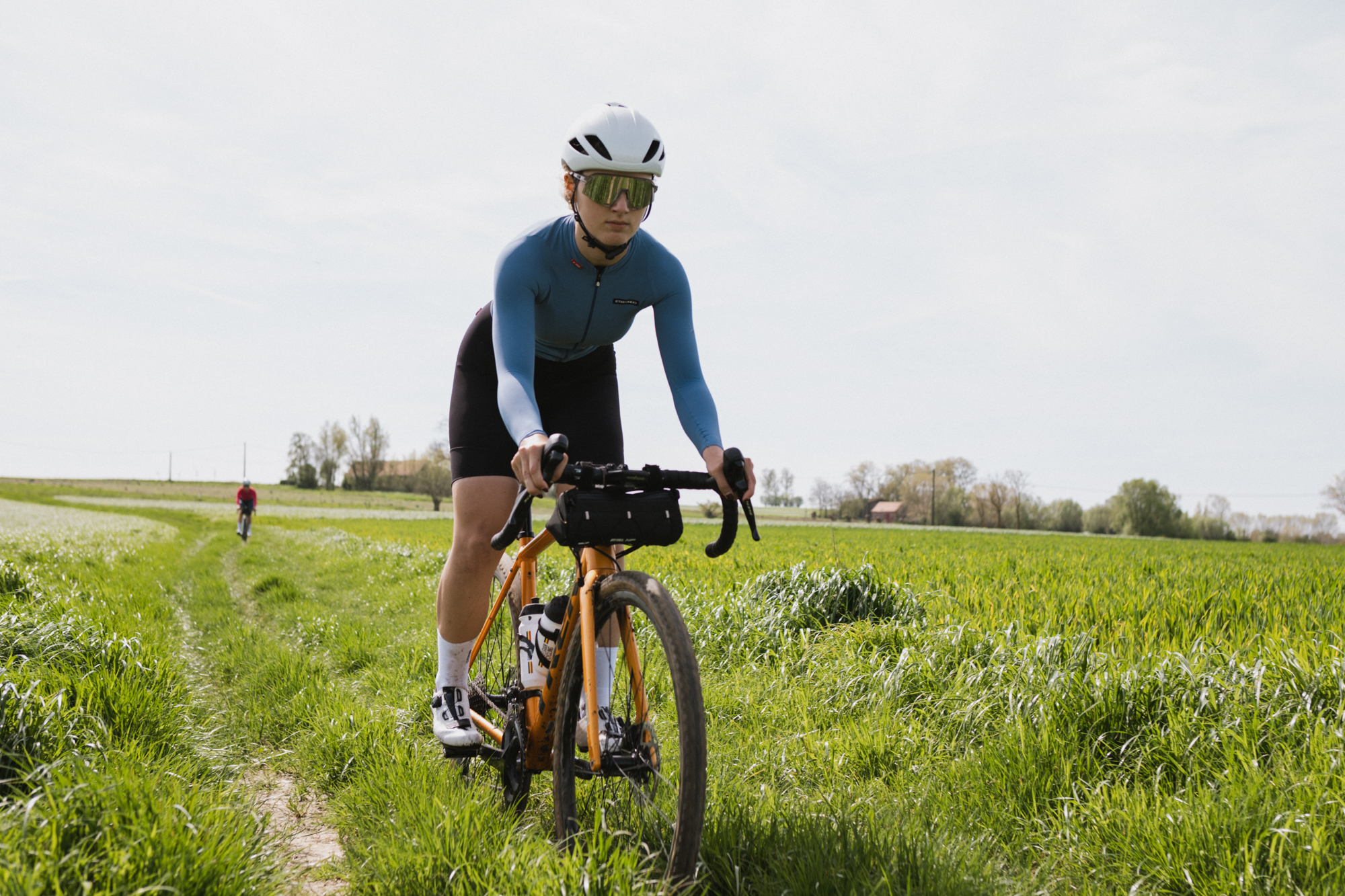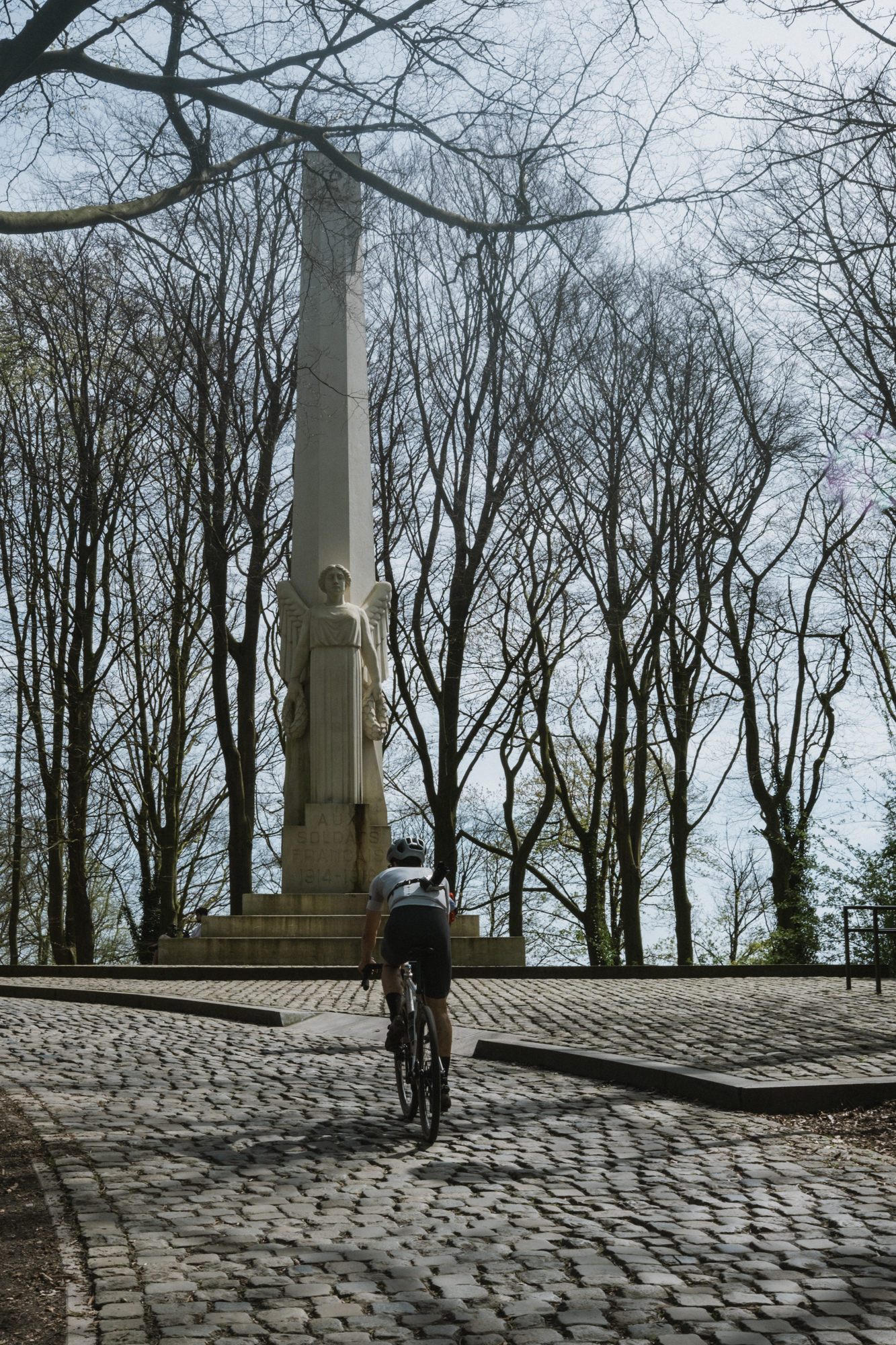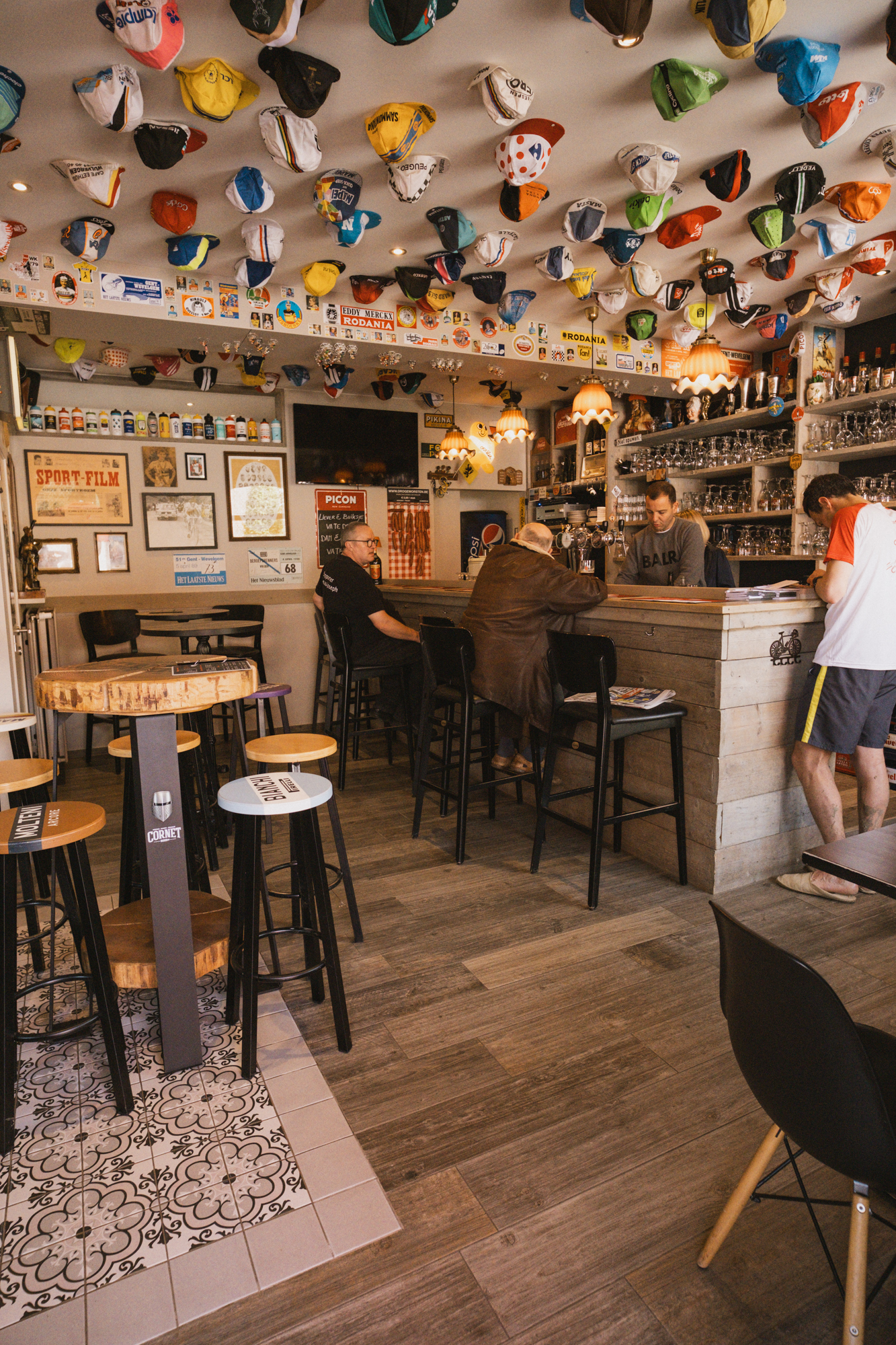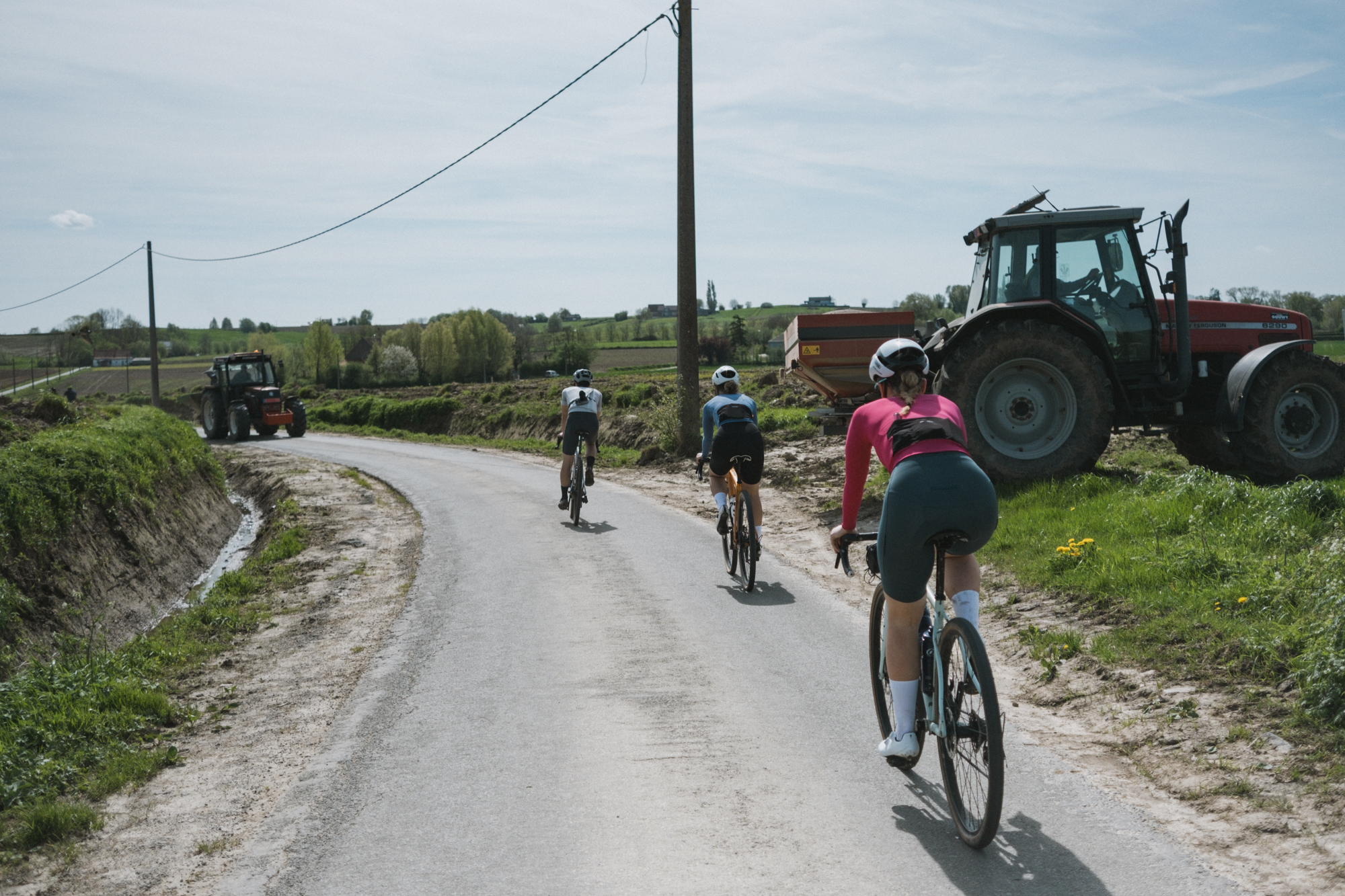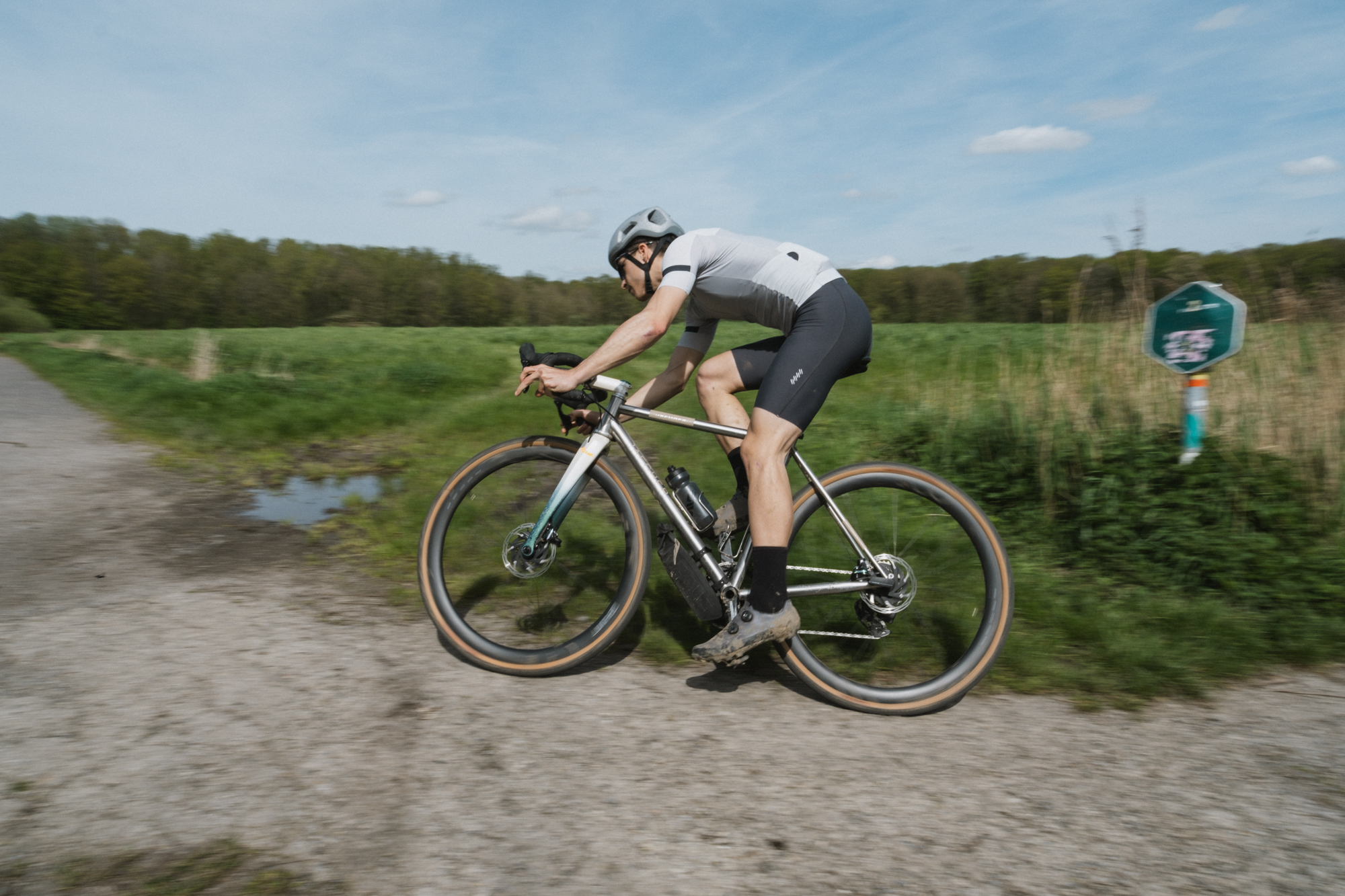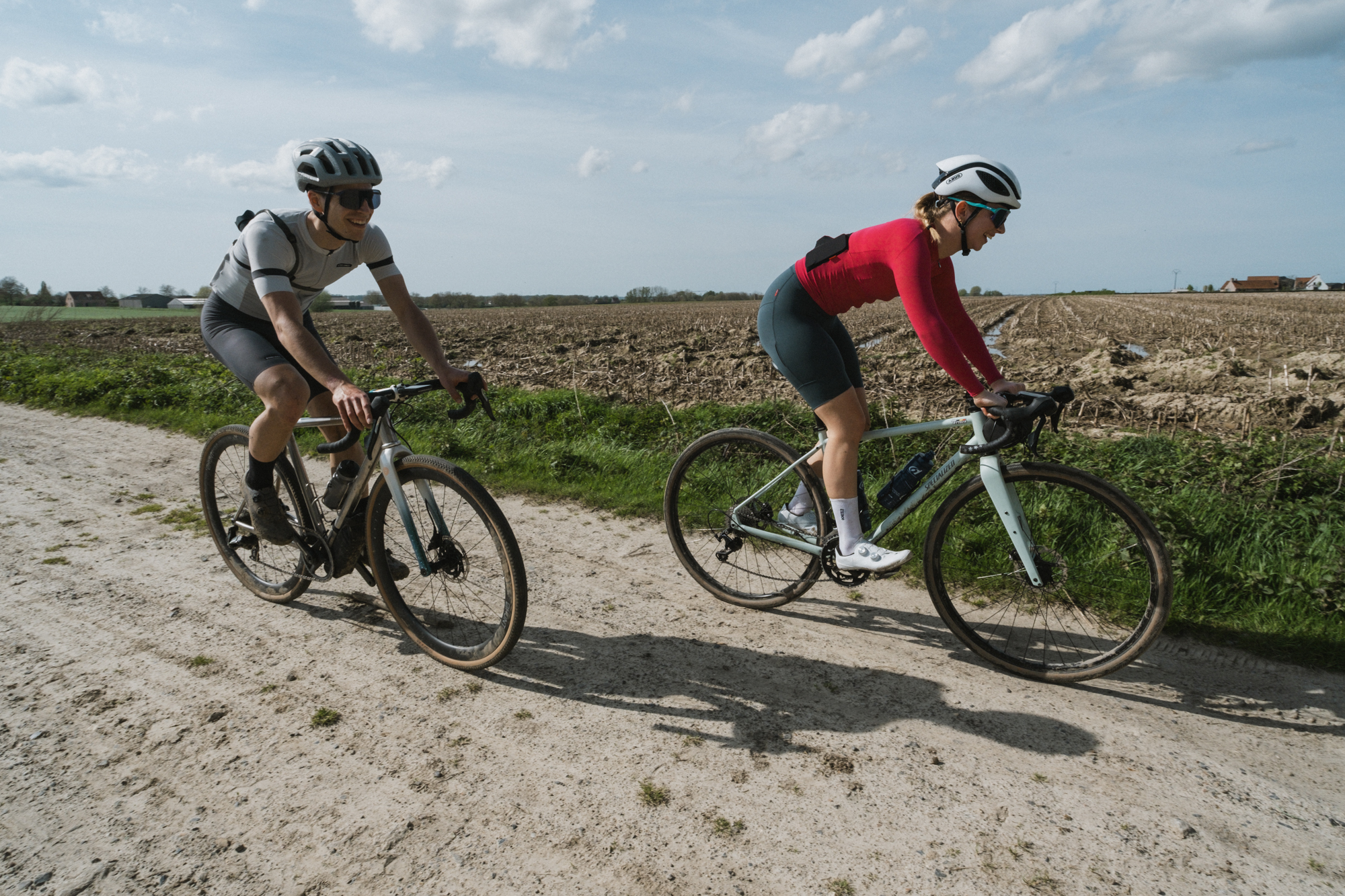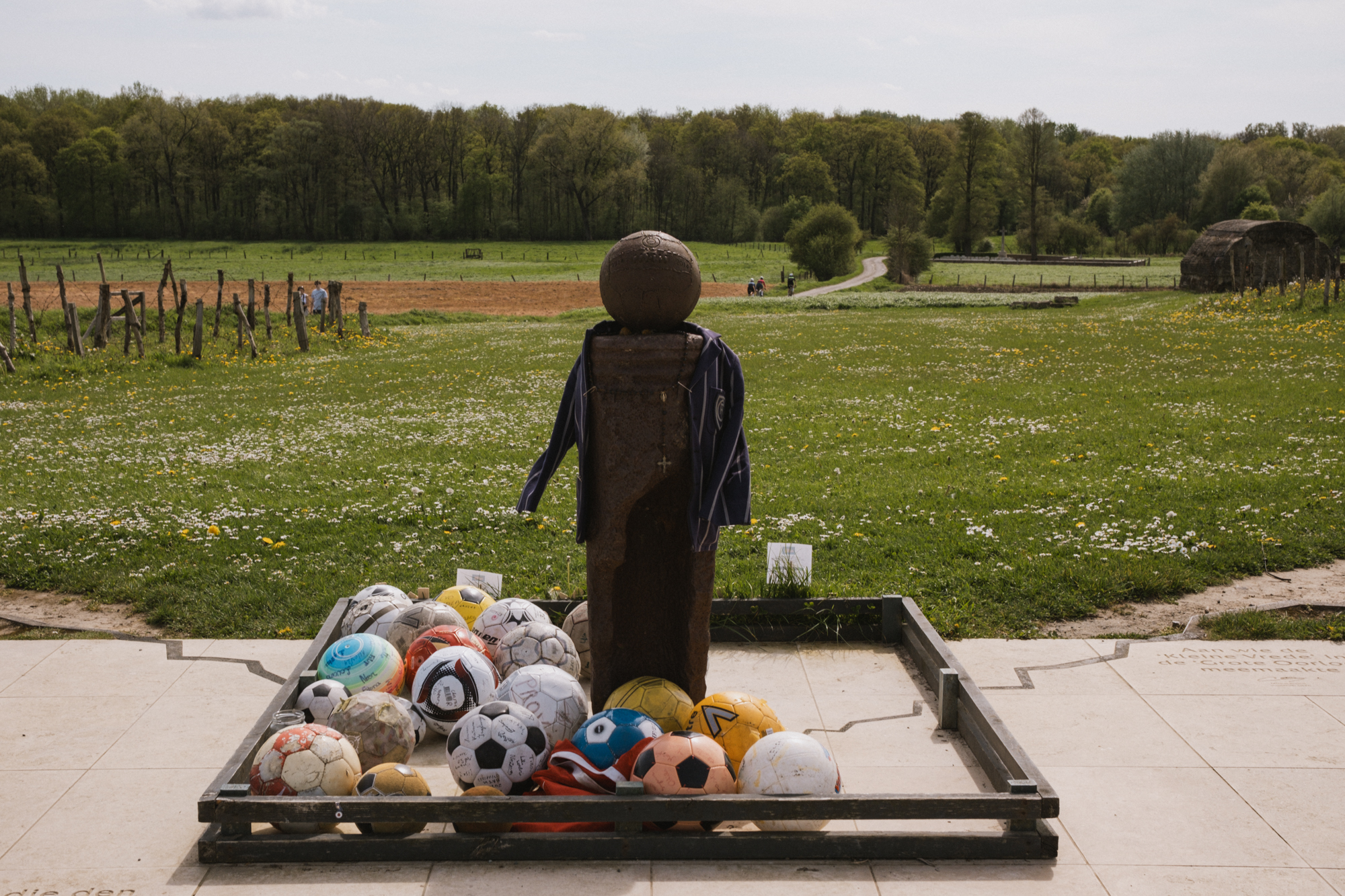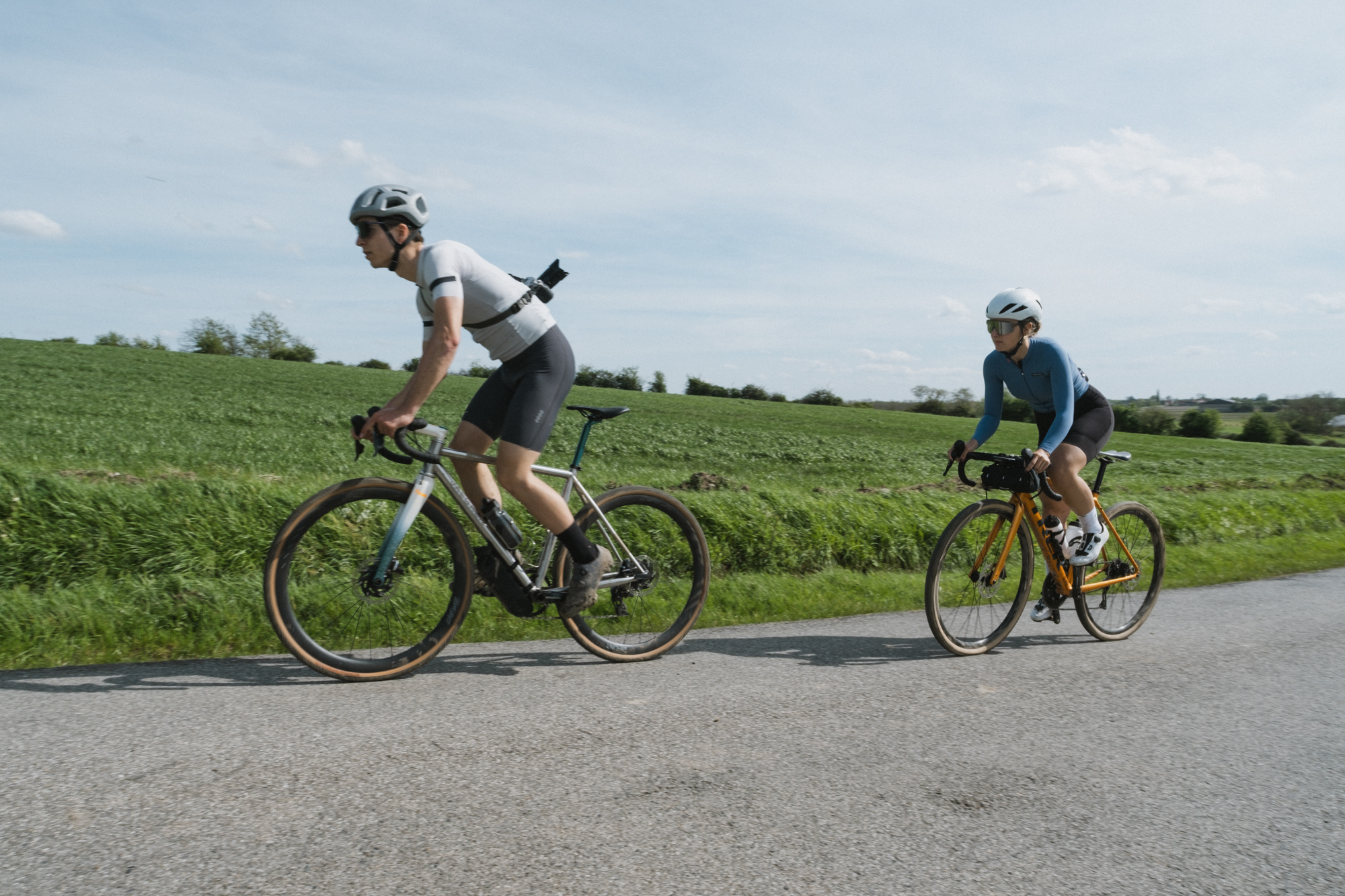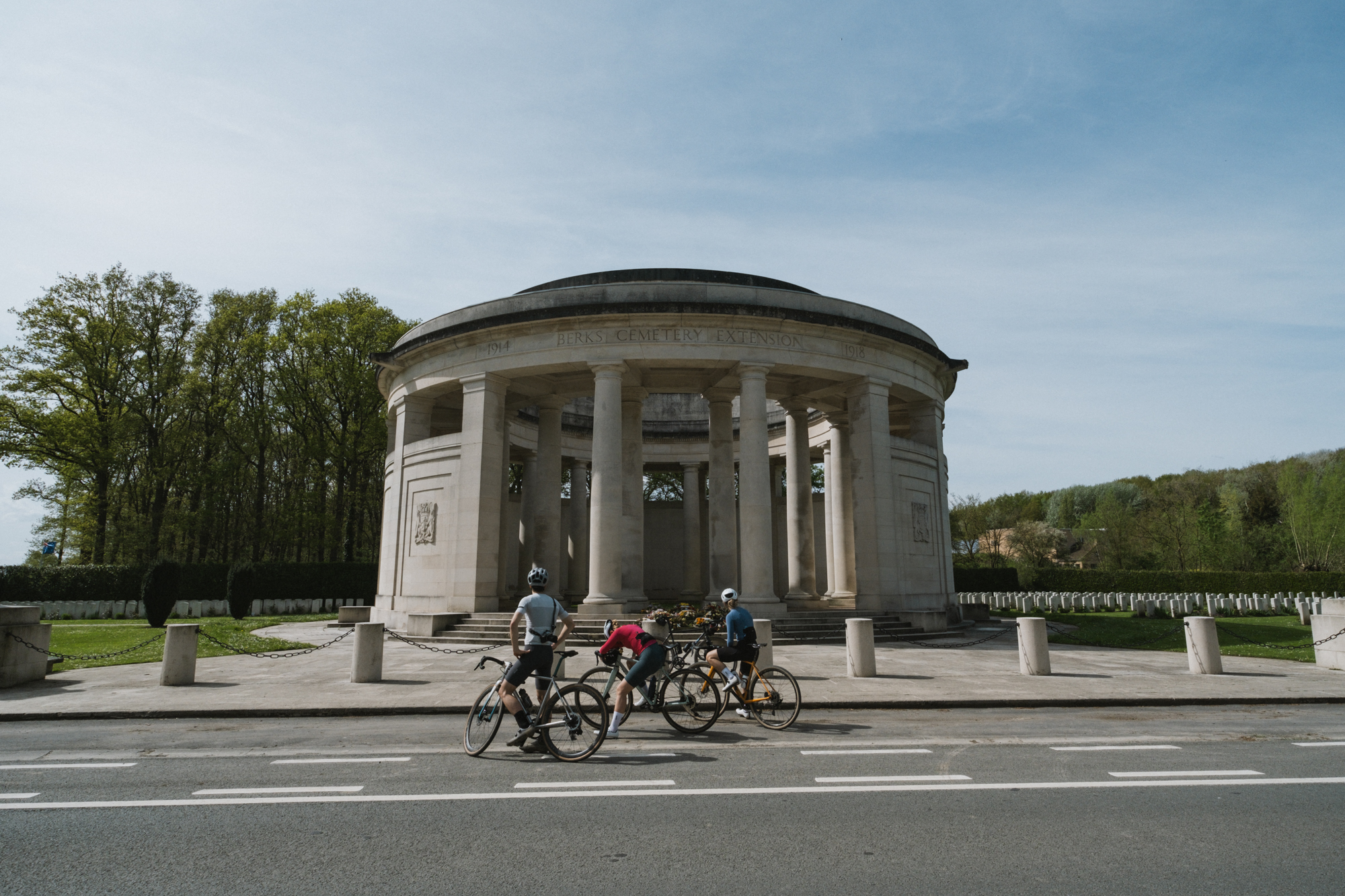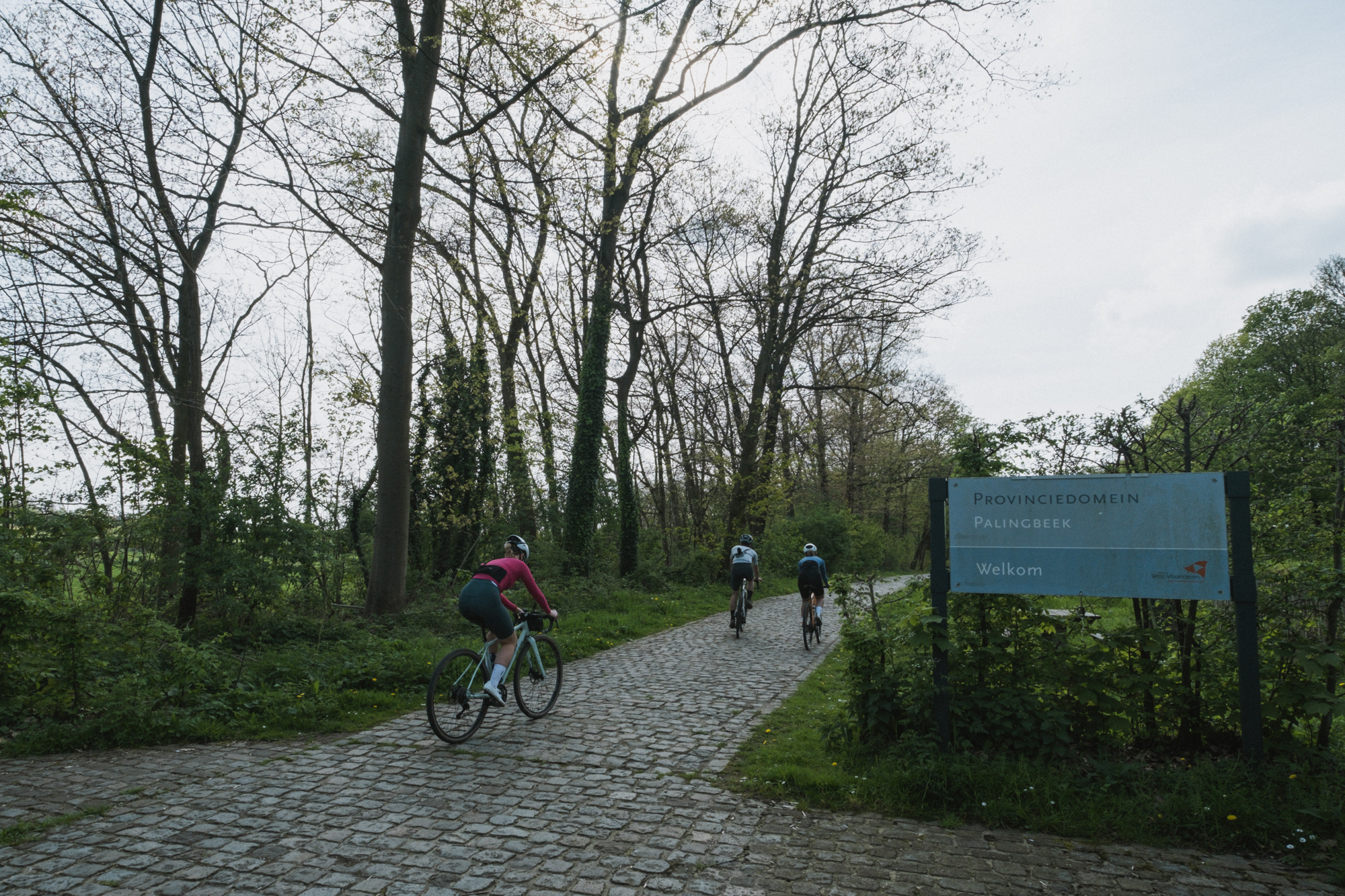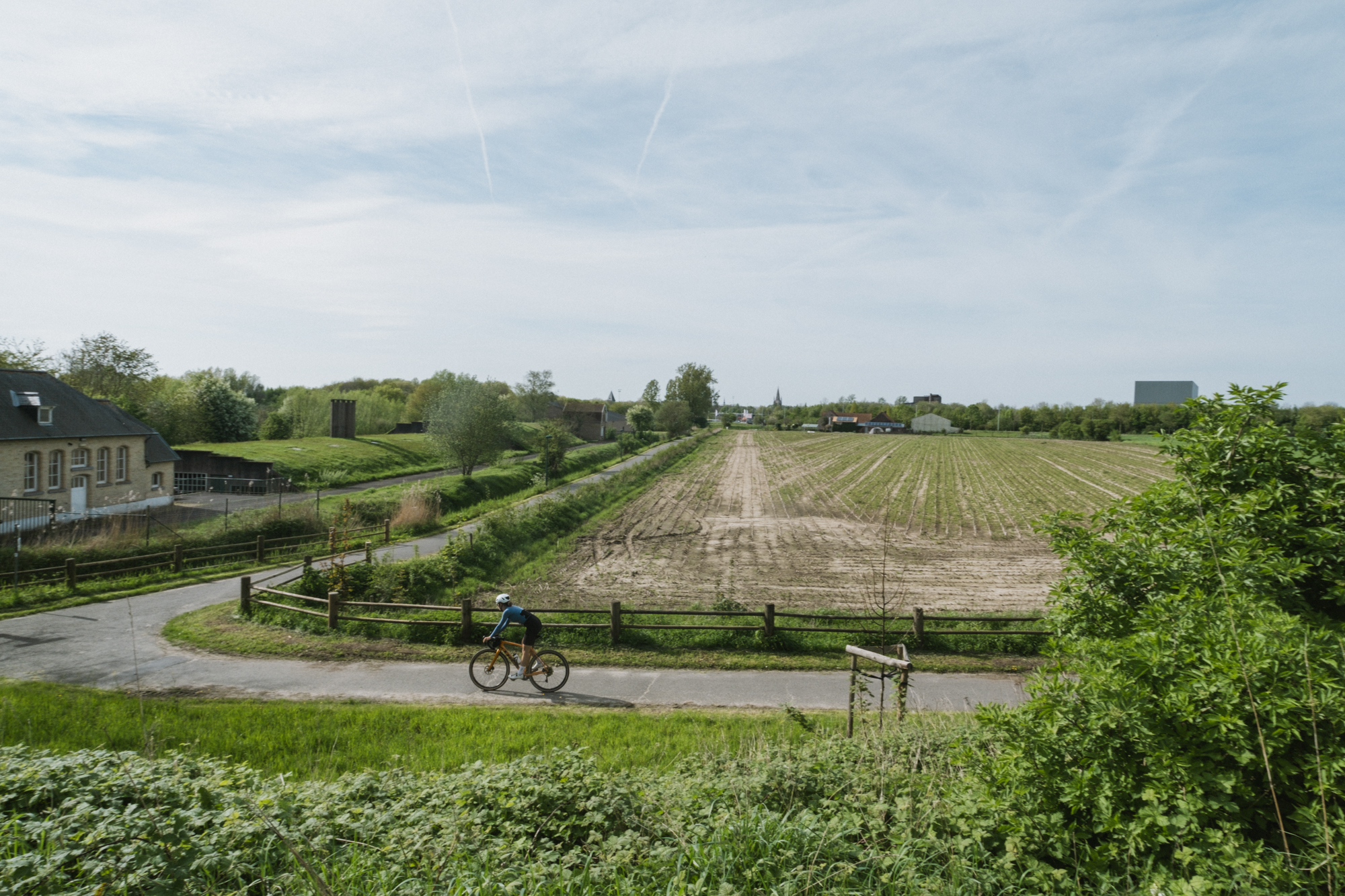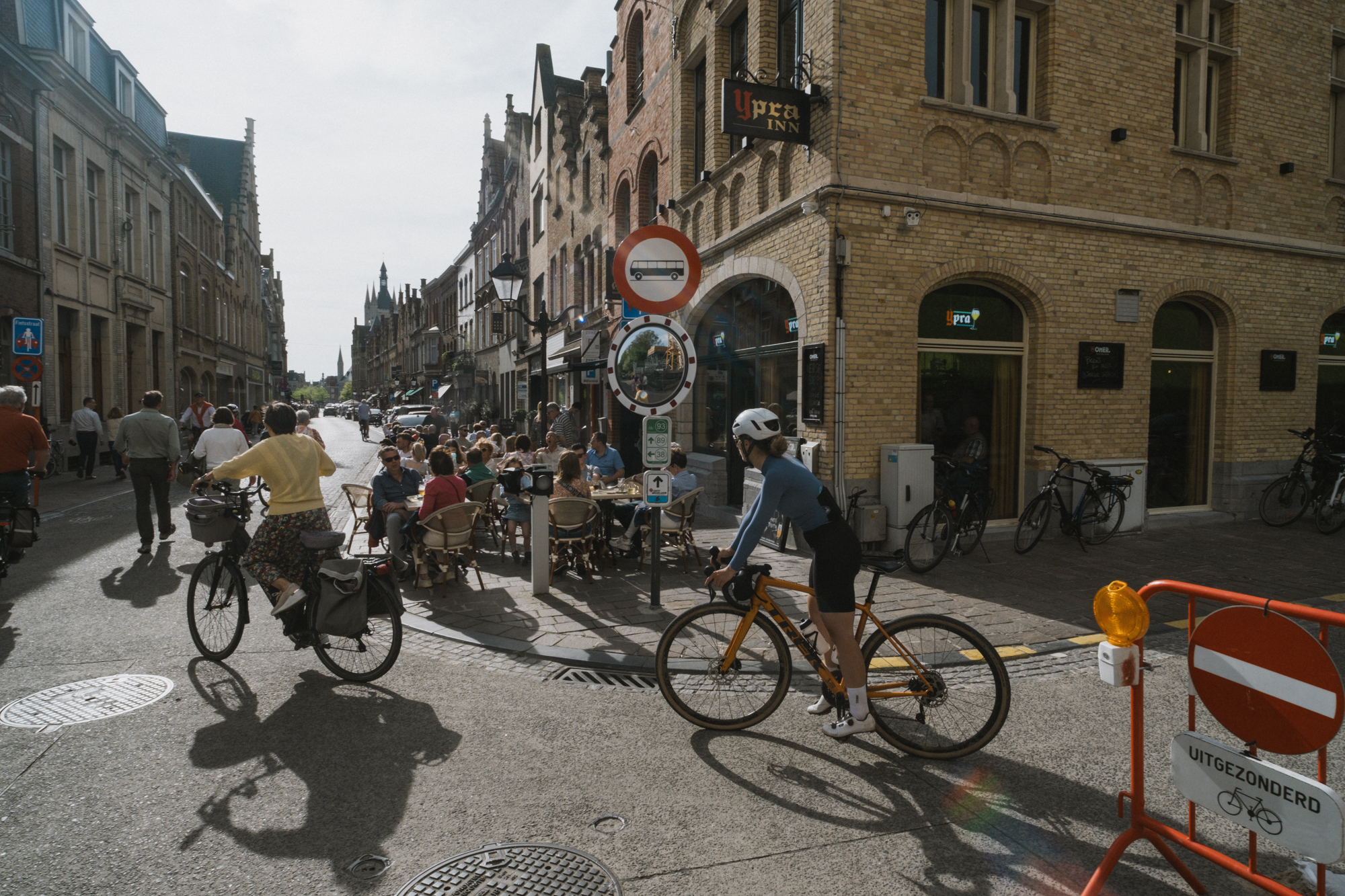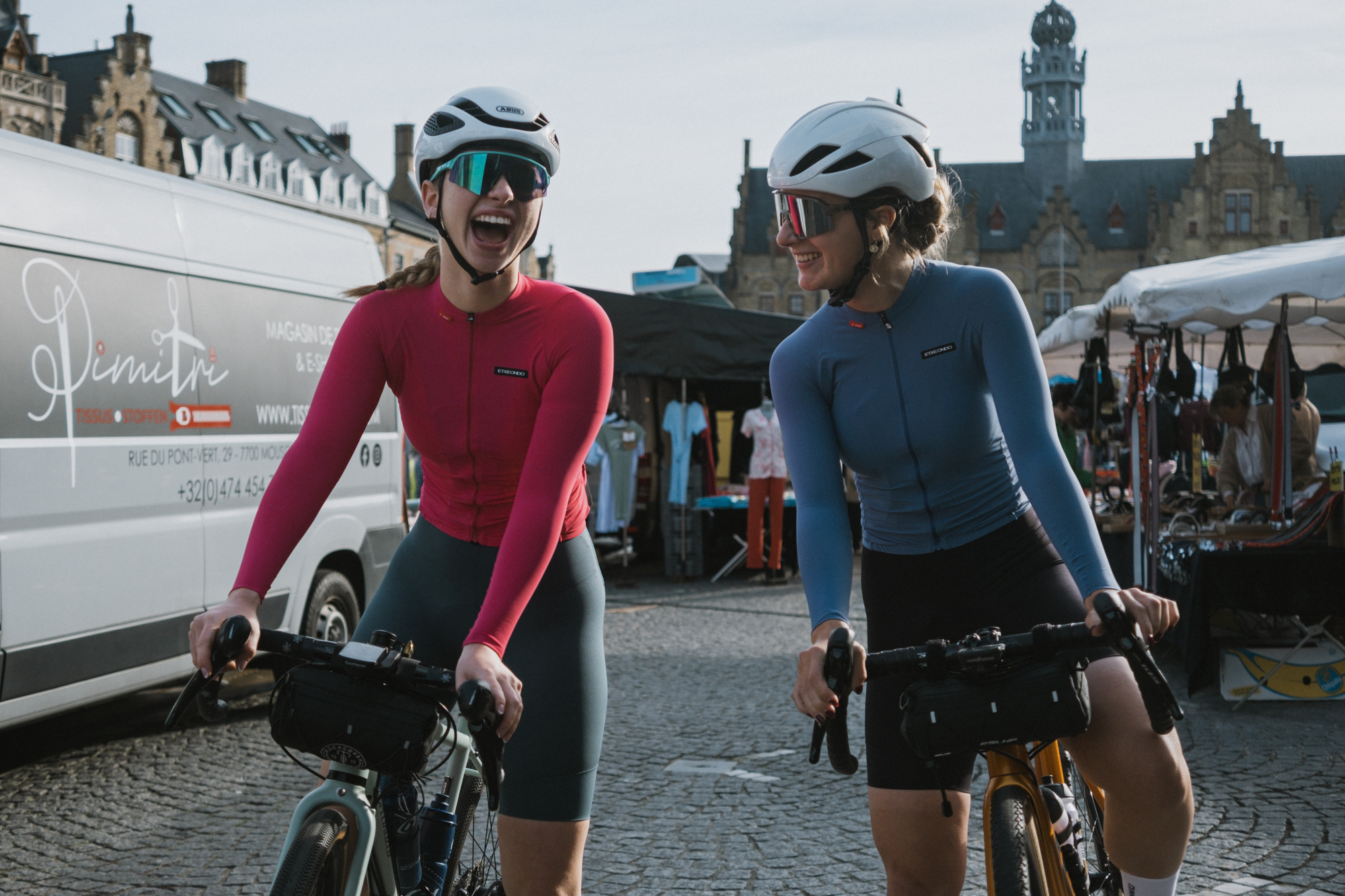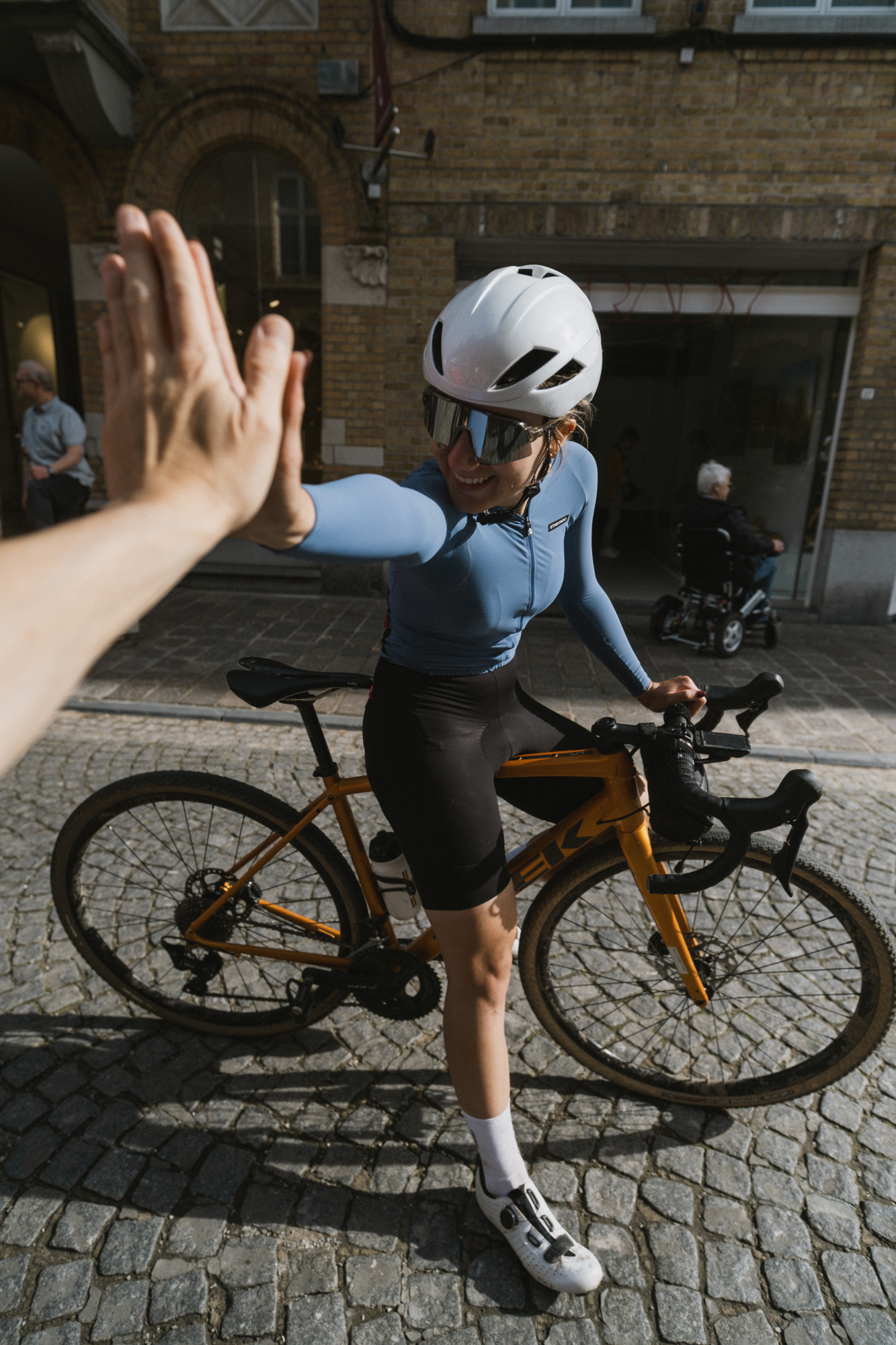We have already explored other parts of Belgium by bike, but the west side of the country was unknown to us. The Kemmelberg was one of the few Belgian bergs still on our bucket list and, after closely watching the recent Gent-Wevelgem unfold, we were triggered to check firsthand if it is as tough as it looked on TV.
In collaboration with Cycling in Flanders, we built a route that encapsulates the essence of one of the most exciting spring classics in the calendar, and allows riders of all levels and backgrounds to tackle it beyond that particular period of the year.
The route planning started from the road route that the riders dealt with this spring but, as gravel enthusiasts, we exchanged some paved sections for off-road surfaces of all sorts, resulting in a 50/50 split. We weren’t fully sure about the state of the terrain given the constant rain of the preceding weeks, but we were up for the challenge.
Local traditions since km 0
As soon as the work week was behind us, we gathered in the beautiful city of Ypres. After a good night of sleep and a hearty breakfast, it was time to put our Etxeondo kit on and head out there.
The start location was the Grote Markt, and knowing that on Saturday mornings there is a local market, we got a last dose of sugar before the start. Toni went for a plain pain au chocolat, unaware of the tasty pastries or koffiekoeken that Belgian people devour on a weekly basis.
We distanced ourselves from the city along a small path running parallel to the local canal. Immediately afterward, we hit the first of the many open fields we would ride past during the day. The area is prone to massive gusts of wind, would luckily for us it was calm and sunny.
The route headed in western direction until we reached the border with France, and from there we started a mellow climb that then turned into a technical trail to reach the top of the Banenberg. As we hit the tarmac again, we saw a dozen riders climbing the hill nonstop from the paved side. We don’t know if their goal was to become the Stava Local Legend or set an Everesting, but it was funny to see them go up and down while we we standing at the top, next to the windmill.
The Banenberg is included in the Flandrien Challenge, an initiative that thousands of riders have completed since the inception of the concept just before the COVID pandemic, To be recognized as a true Flandrien, riders have to conquer 59 bergs and cobbled segments in less than 72 hours, Most are distributed around Oudenaarde, East Flanders, but nine of them are contained in the area where we were riding.
On the other side of the road, there was a vineyard, and from the distance, we saw a massive bench on which you had to climb some stairs to sit. Of course, we headed there and rested for a bit.
A few hundred meters ahead we had our first planned stop, A coffee is all we wanted, but we saw Dame Blanche on the menu and we had to try it. It is considered a traditional Belgian dessert, but there is nothing out of the ordinary in it. Vanilla ice cream, whipped cream and melted chocolate. A boost for the morale nonetheless.
Belgian classics 101: Cobbled bergs
Same as the WorldTour race, the main highlight of the route was the Kemmelberg. This cobbled hill can be approached from several roads and, in our case, unpaved paths. The first half was a natural path with moderate gradients and a dense forest in front of us. “Where does the famous cobbled part start?”, we wondered.
We hit the section covered by the trees and, after turning right next to the French Cemetery & Ossuary, the wall appeared in front of us. Only two hundred meters separated us from the top, but that ramp, with a gradient well over 15%, was a hard one, even with a gravel gear ratio.
Hikers were cheering for us, and we channeled our inner Flandrien spirit to reach the top. That is the side that riders climbed from on the last ascent of the professional race, and then we descended from the Belvedère’s side. A cobbled downhill can be tricky too!
We had bookmarked the Cafe Boutique as one of our stops, as one cannot ride by the village of Heuvelland without taking a look inside. This place has all types of cycling merchandising you can imagine: cycling caps, mini-figures, and even cycling-themed stools. We could have spent several minutes staring at the memorabilia on the walls, but we preferred to sit outside and take advantage of the sunny day we were enjoying.
World War I memorials
Once we resumed our ride, we were more than halfway back to Ypres. The area we were riding at that moment was near one of the frontlines of the war. Units were sent here to recover and start training again after fighting elsewhere.
In particular, we were looking forward to riding the different Plugstreets featured in this route, as we were aware of their meaning and the history behind them. These gravel paths are spread a couple of kilometers north of the small village of Ploegsteert, and yes, they were named this way because the British soldiers based in the area during most of the war were unable to pronounce the name of the aforementioned village.
There are three Plugstreets (Hill 63, Christmas Truce, The Catacombs), each of them with their own share of wartime history. We briefly stopped at the Christmas Truce memorial. According to history, on December 24th, 1914, the Allied forces and the Germans put their attacks on hold to play a football match in no-man’s land.
Over the following kilometers, we rode past many cemeteries where the soldiers who lost their lives in that area during World War I now rest in peace. Even if we didn’t feel like putting a feet on the ground to check what each memorial paid tribute to, we couldn’t stop but think about those years and how lucky we are to ride our bikes without much to worry about.
Ending on a high
With 25 kilometers to go, it was time for one last snack, and it was the perfect moment to try the famous stoofvlees-friet energy gel.
As the sun kept shining hard, we appreciated taking shelter in the Provinciaal Domein De Palingbeek. We entered the park along a cobbled, flat road that we would follow for the next couple of kilometers, and once we reached the other side, we linked it with a couple of nice gravel paths.
The return to Ypres was a big contrast, as we had spent the day mostly on our own and, once we crossed the Menin Gate, we suddenly saw loads of people taking over the terraces on such a lovely afternoon. Unfortunately, the Mening Gate was that day under renovation works, but we could still sense the historical importance of that landmark, with the poppy seed flowers and messages laying on the ground next to it.
We didn’t start in Ghent, and we didn’t finish in Wevelgem, but this off-road version of the professional race contains the main highlights and spices it with some varied gravel paths, turning it into the go-to route for locals and anyone interested in the history behind the race.

